Ivoclar Vivadent ODYSSEY24G Diode laser and footswitch User Manual Odyssey 2 4g Manual
Ivoclar Vivadent, Inc. Diode laser and footswitch Odyssey 2 4g Manual
Users Manual

French Language version of the Odyssey 2.4G Owner’sManual is available upon request.
©2005 Ivoclar Vivadent, Inc. Odyssey is a trademark of Ivoclar Vivadent, Inc.
XXXXXXXX Rev. 0, May 2005
Specifications:
Weight: 5.5 lbs.
Dimensions: 6 1/4”(W) X 8 3/4”(L) X 5 1/2”(H)
Power Range:
•100 mW to 5.0 Watts in 100 mW increments
•Aiming Beam (3 mW )
IEC Laser Classification:
•Laser Diode: Class 4 Laser Device
•Aiming Beam: Class 3R Laser Device
Wavelength:
•Laser: 810 nm ± 20 nm
•Aiming Beam: 630 nm – 660 nm ±15 nm
•Beam Divergence: 9 degrees ± 1 degree
Cordless Foot Switch:
•Frequency: 2.4 GHz
• 9 volt DC
Modes:
•Continuous Wave or Pulse
•Hertz Rate in Pulse Mode – fixed: 1.0 Hz
•Pulse Duration: fixed: 0.5 seconds
•Duty Cycle (pulsed mode): 50%
Audible Notification: Yes
Visual Notification: Yes
Power Requirements: 110 - 120 VAC @ 60 Hertz
Amperage: 1.5 Amps @ 110 - 115 VAC
Complies with:
IEC 60601-2-22
IEC 60825-1
21 CFR 1040.10 and 1040.11
IEC 60601-1
CAN/CSA - C22.2
Ordering Information
XXXXXX Odyssey Laser with Accessories
Contents:
(1) Odyssey Laser Unit
(1) Fiber Cleaver
(1) Fiber Stripper
(1) Protective Glasses - Black
(1) Protective Glasses - White
(1) Protective Glasses - White Frame Slim
(1) 400 Micron Fiber Cartridge System
(1) Package of (50) Hand Piece Tips
(1) Hand piece (autoclavable)
(1) Cordless Foot Switch
(1) Cordless Foot Switch Receiver
(1) 9 volt Alkaline Battery
(1) Power Cord
(1) Owner’s Manual
(1) Procedure Guide
(1) Warranty Card
(1) Key
(1) Laser Safety Sign
(1) Training DVD
Accessories:
579032 Fiber Cleaver
579031 Fiber Stripper
579033 Protective Glasses - Black
579034 Protective Glasses - White
579035 Protective Glasses - White Slim
579036 400 Micron Fiber Cartridge System
579039 Package of (50) Hand Piece Tips
579038 Hand Piece
XXXXX Cordless Foot Switch
XXXXX Cordless Foot Switch Receiver
579041 Power Cord
UNITED STATES
175 Pineview Drive
Amherst, New York 14228
716-691-0010
800-533-6825
Fax: 716-691-2285
www.ivoclarvivadent.us.com
CANADA
Ivoclar Vivadent, Inc
2785 Skymark Ave., Unit 1
Mississauga, ON L4W 4Y3
905-238-5700
800-263-8182
Fax: 905-238-5711
www.ivoclarvivadent.ca
EUROPEAN AUTHORIZED REPRESENTATIVE
Ivoclar Vivadent, AG
Bendererstrasse 2, FL-9494,
Schaan, Liechtenstein
+423-235-3535 100%CUSTOMER
SATISFACTION
GUARANTEED!
Learn more about the Odyssey at
www.GetOdysseyLaser.com
This device complies with part 15 of the FCC Rules.
Operation is subject to the following two conditions:
(1) This device may not cause harmful interference, and
(2) this device must accept any interference received,
including interference that may cause undesired operation.
ID: TFIODYSSEY24G
Model No.: 595126
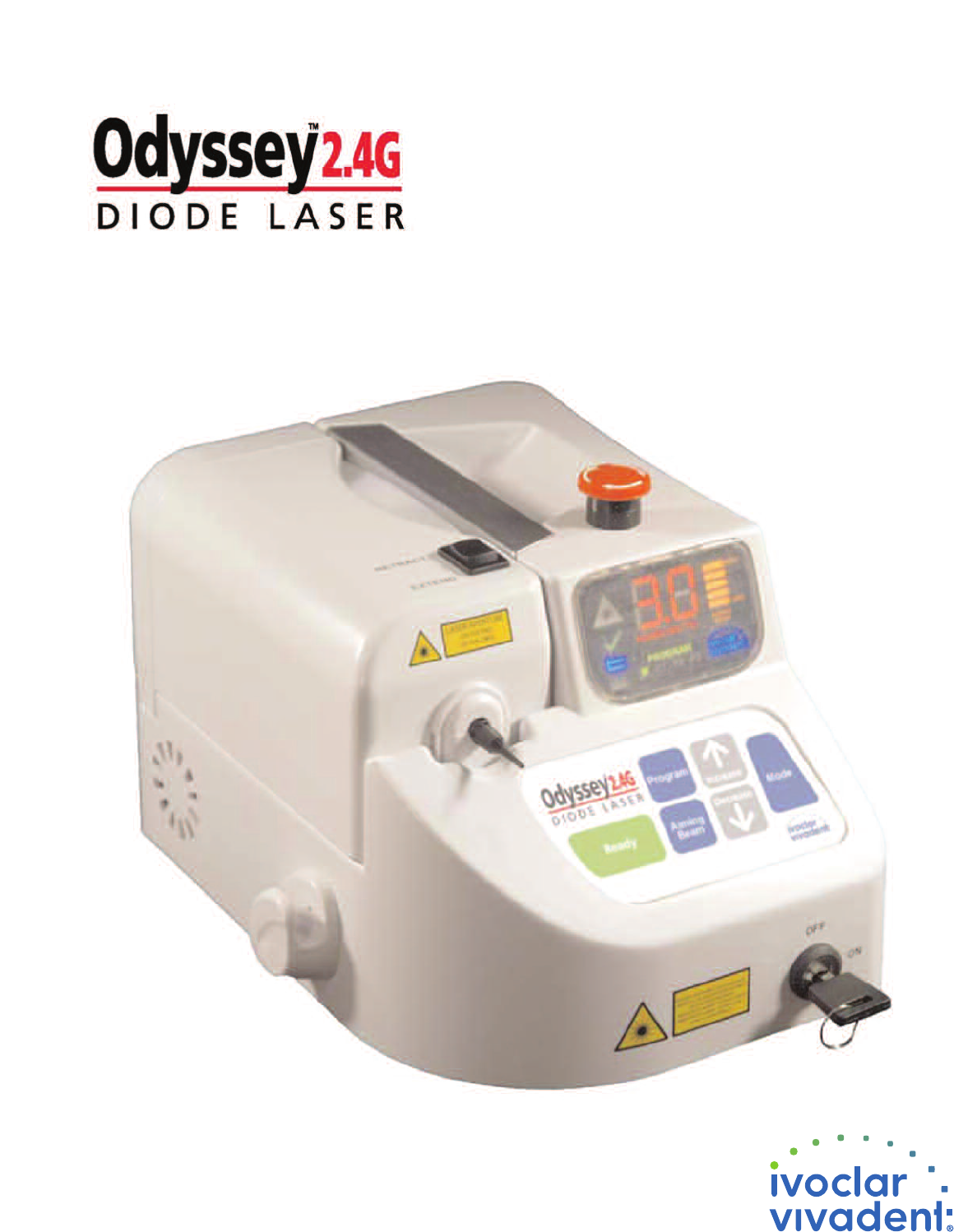
Owner’s Manual

Table of Contents
Section 1 - Introduction . . . . . . . . . . . . . . . . . . . . . . . . . . .1
Section 2 -Specifications
2.0 Laser Specifications . . . . . . . . . . . . . . . . . . . . . . . .2
2.1 Delivery System Specifications . . . . . . . . . . . . . . . .2
2.2 Warranty . . . . . . . . . . . . . . . . . . . . . . . . . . . . . . . . .2
2.3 Parts List . . . . . . . . . . . . . . . . . . . . . . . . . . . . . . . . .2
Section 3 – Laser Assembly Instructions
3.0 Removing the Laser from the Packaging . . . . . . . .3
3.0.1 Instructions on Unpacking & Dealer Assistance .3
3.0.2 Shipping Container Information . . . . . . . . . . . . .3
3.0.3 Contents of the Shipping Container . . . . . . . . . .3
3.1 Assembling the Laser . . . . . . . . . . . . . . . . . . . . . .3
3.1.1 The Laser Chassis . . . . . . . . . . . . . . . . . . . . . . . . .3
3.1.2 Power Cord Installation . . . . . . . . . . . . . . . . . . . .3
3.1.3 Power/Fan Switch - Check
Checking the Laser Key Switch . . . . . . . . . . . . . .3
3.1.4 Laser Key Switch – Check . . . . . . . . . . . . . . . . . .3
3.1.5 Foot Switch Installation . . . . . . . . . . . . . . . . . . . .3
3.1.6 Odyssey Remote Interlock . . . . . . . . . . . . . . . . . .3
3.1.7 Emergency Shutdown Switch . . . . . . . . . . . . . . .4
3.1.8 Installing the Disposable Fiber Cassette . . . . . . . .4
3.1.9 Review of Installation Procedures . . . . . . . . . . . .4
Visual Assembly Aides
Figure 3.0 Back Panel of the Laser . . . . . . . . . . . . . . . .5
Figure3.1 Front Panel of the Laser . . . . . . . . . . . . . . . .5
Figure 3.1a Key Switch Activation . . . . . . . . . . . . . . . .5
Figure 3.2 Laser Control Pad . . . . . . . . . . . . . . . . . . . . .6
Figure3.2a Laser Display Indicators . . . . . . . . . . . . . . .6
Figure 3.3 Cordless Foot Switch Input Port . . . . . . . . . .6
Figure3.4 Cordless Foot Switch . . . . . . . . . . . . . . . . .6
Figure3.5 Emergency Shutdown Button - Activating . .7
Figure 3.6 Emergency Shutdown Button - Releasing . .7
Figure3.7 Top View - Emergency Shutdown
Button and Fiber Retraction Switch . . . . . . .7
Figure 3.7a Advance and Retraction
Switch Activation . . . . . . . . . . . . . . . . . . . .7
Figure 3.8 Laser Aperture and Cassette Power
Receiver Location on the Chassis . . . . . . . . .7
Figure 3.9 Disposable Fiber Cassette Base
with a 15 Pin Power Coupler . . . . . . . . . . . .8
Figure 3.10 Removable End Cap on the Cassette . . . .8
Figure 3.11 Disposable Fiber Cassette without
an End Cap . . . . . . . . . . . . . . . . . . . . . . . .8
Figure 3.12 Proximal End of the Fiber
as it Exits the Cassette . . . . . . . . . . . . . . . .8
Figure3.13 Locking Hub . . . . . . . . . . . . . . . . . . . . . . . .8
Figure 3.14 Alignment Slot . . . . . . . . . . . . . . . . . . . . . .8
3.2 Facility Requirements . . . . . . . . . . . . . . . . . . . . . . .9
3.2.1 Electrical Requirements . . . . . . . . . . . . . . . . . . . .9
3.2.2 Heating and Ventilation . . . . . . . . . . . . . . . . . . . .9
3.2.3 Lighting . . . . . . . . . . . . . . . . . . . . . . . . . . . . . . . .9
3.2.4 Combustible Chemicals and Gases . . . . . . . . . . .9
3.2.5 High Speed Vacuum Systems . . . . . . . . . . . . . . .9
3.2.6 Access and Visual . . . . . . . . . . . . . . . . . . . . . . . .9

Section 4 - Safety Considerations
4.0 Food and Drug Administration . . . . . . . . . . . . . . . .9
4.1 Wireless Technology . . . . . . . . . . . . . . . . . . . . . . . .9
4.2 Statutory Licensure . . . . . . . . . . . . . . . . . . . . . . . . .9
4.3 OSHA and its Provisions . . . . . . . . . . . . . . . . . . . . .9
4.4 Laser Safety Officer (LSO) . . . . . . . . . . . . . . . . . . .10
4.5 Continuing Education . . . . . . . . . . . . . . . . . . . . . .10
4.6 In-office Safety Issues . . . . . . . . . . . . . . . . . . . . . .10
4.6.1 Lighting . . . . . . . . . . . . . . . . . . . . . . . . . . . . . . .10
4.6.2 Safety Eyewear . . . . . . . . . . . . . . . . . . . . . . . . .10
4.6.3 Test Firing the Laser . . . . . . . . . . . . . . . . . . . . . .10
4.6.4 Power Changes with Fiber Changes . . . . . . . . .10
4.6.5 Fiber Preparations . . . . . . . . . . . . . . . . . . . . . . .10
4.6.6 Danger – Laser in Use Signage . . . . . . . . . . . . .11
4.6.7 Sharps Disposal . . . . . . . . . . . . . . . . . . . . . . . . .11
4.6.8 Plume Evacuation . . . . . . . . . . . . . . . . . . . . . . .11
4.6.9 Key Switch and Mode Selection . . . . . . . . . . . .11
4.6.10 Safety Education . . . . . . . . . . . . . . . . . . . . . . .11
4.6.11 Laser Security . . . . . . . . . . . . . . . . . . . . . . . . . .11
4.6.12 Emergency Shutdown Options . . . . . . . . . . . .11
4.6.13 Hard Tissue Procedures . . . . . . . . . . . . . . . . . .11
4.7 ANSI Standards . . . . . . . . . . . . . . . . . . . . . . . . . . .11
Section 5 – Operating the Laser
5.0 Standby and Ready Status . . . . . . . . . . . . . . . . . .11
5.1 Continuous Wave Mode . . . . . . . . . . . . . . . . . . .11
5.2 Pulsed Energy Mode . . . . . . . . . . . . . . . . . . . . . . .11
5.3 Tissue Responses to Laser Energy . . . . . . . . . . . . .12
Figure5.1 Poor Cleave on the Fiber . . . . . . . . . . . . . .12
5.4 Fiber and Hand Piece Care..................12
5.5 Warning (Fiber Cassette Care) . . . . . . . . . . . . . . .12
5.6 System Procedures . . . . . . . . . . . . . . . . . . . . . . . .12
5.6.1 Selecting the Treatment Center . . . . . . . . . . . . .12
5.6.2 Checking Foot Switch Installation . . . . . . . . . . .12
5.6.3 Checking the Disposable Fiber
Cassette Installation . . . . . . . . . . . . . . . . . . . . .12
5.6.4 Checking Fiber Preparation . . . . . . . . . . . . . . . .12
5.6.5 Checking the Emergency
Shutdown Button - Release Instructions . . . . . .13
5.6.6 Checking the Key Activation and
Control Panel Display . . . . . . . . . . . . . . . . . . . .13
5.6.7 Setting Mode Parameters . . . . . . . . . . . . . . . . .13
5.6.8 Setting Power Parameters . . . . . . . . . . . . . . . . .13
5.6.9 Aiming Beam – Switching On and Off . . . . . .13
5.6.10 Avoiding Use of a Defective Fiber Tip (Shards) 13
5.6.11 Aiming Beam Activation . . . . . . . . . . . . . . . . .13
5.6.12 Test Firing the Laser Before
Beginning Procedures . . . . . . . . . . . . . . . . . . .13
5.6.13 Using Quick/Short Strokes with the Fiber Tip .13
5.6.14 Cleaning the Fiber Tip During a Procedure . . .13
5.6.15 Preventive Measure –
Placing the Laser in Standby . . . . . . . . . . . . . .13
5.6.16 Cleave used fiber tip and discard . . . . . . . . . .13
5.6.17 Preventive Measure -
Cleaning the Fiber BeforeRetracting It. . . . . .13
5.6.18 Preventive Measure –
Turning the Key OffBetween Procedures . . . .13
5.6.19 Recording Power,Mode and Time
Parameters in the Patients Chart. . . . . . . . . . .13
5.6.20 Self Diagnostic and Monitoring . . . . . . . . . . . .13
Section 6.0 Systems Components:
Preparation, Care and Maintenance
6.0 Disposable Fiber Cassette . . . . . . . . . . . . . . . . . . .14
6.0.1 Replacing the Fiber Cassette . . . . . . . . . . . . . . .14
6.1 Fiber Preparation . . . . . . . . . . . . . . . . . . . . . . . . . .14
6.1.1 Jacket . . . . . . . . . . . . . . . . . . . . . . . . . . . . . . . . .14
6.1.2 Cladding . . . . . . . . . . . . . . . . . . . . . . . . . . . . . .14
6.1.3 Quartz/Silica Fiber . . . . . . . . . . . . . . . . . . . . . . .15
6.1.4 Stripping the Fiber . . . . . . . . . . . . . . . . . . . . . . .15
6.1.5 Cleaving the Fiber . . . . . . . . . . . . . . . . . . . . . . .15
6.1.6 Initiating the Fiber . . . . . . . . . . . . . . . . . . . . . . .15
6.1.7 Fiber Disinfection . . . . . . . . . . . . . . . . . . . . . . . .15
6.2 Maintenance . . . . . . . . . . . . . . . . . . . . . . . . . . . . .16
6.2.1 Laser Chassis Disinfection . . . . . . . . . . . . . . . . .16
6.2.2 Calibration . . . . . . . . . . . . . . . . . . . . . . . . . . . . .16
6.3 Hand Piece Preparation . . . . . . . . . . . . . . . . . . . .16
6.3.1 Preparation for Autoclaving . . . . . . . . . . . . . . . .16
6.3.2 Components of the Hand Piece . . . . . . . . . . . .16
6.3.3 Providing Adequate Fiber to
Cleave, Strip and Initiate . . . . . . . . . . . . . . . . . .16
6.3.4 Disposable Tips . . . . . . . . . . . . . . . . . . . . . . . . .16
6.3.5 Using the Stripper . . . . . . . . . . . . . . . . . . . . . . .16
6.3.6 Mounting the Disposable Tip . . . . . . . . . . . . . .16
Section 7.0 Labels, Signs, Warnings and Information
7.1 Federal Compliance . . . . . . . . . . . . . . . . . . . . . . .17
7.2 Danger – Laser in Use Signage . . . . . . . . . . . . . . .17
7.3 Laser Classification – Aiming Beam . . . . . . . . . . .17
7.4 Laser Classification – Treatment Laser . . . . . . . . .17
7.5 Caution – Changes Not Approved . . . . . . . . . . . .17
7.6 Caution – Avoid Skin and Eye Contact . . . . . . . .17
7.7 Caution – No User Serviceable Parts
Within the Chassis . . . . . . . . . . . . . . . . . . . . . . . .17
7.8 Caution – Sale or Use of a Laser
by Other than a Physician or Dentist . . . . . . . . . .17
7.9 WARNING – Do Not Use Eyewear for
Other than the 810 nm Wavelength . . . . . . . . .17
7.10 Manufacturer’s General Information . . . . . . . . .17
7.11 Nominal Ocular Hazard Distance . . . . . . . . . . . .18
Section 8.0 Warranty Policy
8.1 Loaner Policy . . . . . . . . . . . . . . . . . . . . . . . . . . . . .18
8.2 Repairs . . . . . . . . . . . . . . . . . . . . . . . . . . . . . . . . .18
8.3 Customer Service Address . . . . . . . . . . . . . . . . . .18
Section 9.0 Glossary of Laser Terminology . . . . . . . . . . . .18
Section 10.0 Selected References on Laser Dentistry . . . .19
Section 11.0 Troubleshooting . . . . . . . . . . . . . . . . . . . . . .20

1
Section 1 - Introduction
Asdentists strive to create the perfect smile, they are often
compromised by the technology they use in their practice.
Respected leaders from the dental profession and dental
equipment manufacturers have sought to identify the most
practical and least invasive technology available to deliver
restorative and preventive care. Today, thanks to continuing
efforts by these industry leaders, we have seen the introduc-
tion of many new devices that have advanced the dentist’s
ability to perform at the highest standards. The ODYSSEY
2.4G DIODE LASER from Ivoclar Vivadent, Inc. represents the
latest solid state diode laser technology available for soft tis-
sue modification and preventative care.
Unlike solid state lasers that utilize a man-made rod of ele-
ments such as yttrium, aluminum, and garnet, doped with a
rareearth compound like Erbium, the diode has components
that have become known for their durability, dependability
and longevity. We are, of course, referring to semi-conductor
crystal technology like that found in televisions, DVD players,
telephones and many more of those household products that
we have learned to rely on each day.
The major components of the Odyssey 2.4G are semi-con-
ductor “chips” made from Aluminum, Gallium and Arsenide,
together commonly referred to as AlGaAs. They are activat-
ed or “pumped” by passing an electrical current through the
diode to produce an elliptical shaped display of monochro-
matic light that can be focused into a very small point and
placed into the delivery fiber. The wave length produced by
the diode is approximately 810 nanometers (nm) and pro-
duces invisible non-ionizing thermal radiation that does not
create changes in cellular DNA. The diode is air cooled and
highly efficient when used correctly. For safety, the diode fea-
tures several ways to stop energy flow if the operator wishes
to deactivate the laser. The safety system includes a choice of
an emergency shutoff switch, a key, a power switch, a power
cord or an electrical plug. Any of these items can be used to
shut down the laser.
The design and technology used in the Odyssey 2.4G allows
the dentist or hygienist (in states where the Dental Practice
Act doesn’t prohibit hygienists from using a laser) to transport
the laser between different operatories. It has a light weight
and durable chassis that is designed to use 110 – 120 V elec-
tricity found in most dental offices.
Training is recommended and opportunities for such are
available through such outlets as the Academy of Laser
Dentistry and many of the dental schools. You should ask your
authorized representative for the names of dentists in your
area who have a laser and who could help you in a mentoring
capacity. There are many applications for using this laser
system and you will be proud of the results you attain when
you use the Odyssey 2.4G regularly.
Laser safety is paramount in importance and each office
should quickly develop and implement a laser safety program
and appoint a “laser safety officer” to be responsible for the
laser.Their duties include management of the laser and all
accessories as well as training office personnel in all aspects of
laser safety. More duties are outlined in Section 4, subsection
4.3 of this manual.
Remember: Always test fire the laser outside the
mouth before using it on a patient. The doctor, the
patient and any staffmember present in the operatory
should be wearing the appropriate safety eyewear
whenever the laser is being operated. Strict adherence
to protocols for safe laser use is essential.

2
Section 2 – Specifications
2.0 Laser Specifications
Weight 5.5 lbs
Dimension in inches (H X W X L) 5.5” X 6.25” X 8.75”
Laser Classification (Per 60825)
Laser Diode Class 4 Laser Device
Aiming Beam Class 3R Laser Device
Wavelength
Laser 810 nm ±20 nm
Aiming Beam 630 nm – 660 nm ±15 nm
Beam Divergence 9 degrees ± 1 degree
Power Range 100 mw to 5 Watts
Hertz Rate in Pulsed Mode - fixed 1.0 Hz
Pulse Duration - fixed 0.5 seconds
Duty Cycle
pulsed mode 50%
continuous wave 100%
Aiming Beam (3 mW ) Yes
Audible Notification Yes
Visual Notification Yes
Power Requirements 110 - 120 VAC @ 60 Hertz
220 - 240 VAC @ 50 Hertz
Amperage 1.5 Amps @ 110-115 V AC
0.75 Amps @ 210-230 V AC
Cordless Foot Switch
Frequency 2.4 GHz
Battery 9 volt DC Alkaline
2.1 Delivery System Specifications
2.1.1 Quartz silica fiber
1cassette – approximately 20’ each (6 meters)
Fiber Diameter 400 microns
Autoclavable No
Retractable fiber delivery
cassette (non-autoclavable) 1
2.2.2 Hand Piece - Autoclavable 1
2.2.3 Tips for the Hand Piece
Autoclavable and disposable 50 per box
2.2.4 Laser Aperture -ST Adapter Type Yes
2.2 Warranty (See also Section 8)
Laser 1 year Parts and Labor
Fiber and Cassette 90 days Parts and Labor
2.3 Parts List PartIdentification number
Cordless Foot Switch XXXXXX
Cordless Foot Switch Receiver XXXXXX
Power Cord 579041
Disposable Fiber Cassette
with a 400 micron fiber 570936
Disposable Fiber Cassette
with a 600 micron fiber 579037
Laser Safety Eyewear
(appropriate for 810 nm protection)
Black 579033
White 579034
White Slim 579035
Hand Piece (autoclavable) 579038
Disposable Handpiece Tips (50 quantity) XXXXXX
Fiber Cleaver 579032
Fiber Stripper 579031
Owner’s Manual XXXXXX
Danger Sign 580280
Procedure Guide 579347

3
Section 3 - Laser Assembly Instructions
3.0 Removing the Laser from the Packaging
3.0.1 - Your local authorized dealer can provide a representa-
tive to assist you when you are ready to remove the laser from
its shipping container. You may remove it yourself if you wish
to get a head start on the set-up, but please do not attempt
to unpack the laser and install the various components with-
out reading this section first. If you are unsure about any
aspect of the assembly, call your authorized dealer represen-
tative for assistance.
3.0.2 - Please do not destroy or throw away your shipping
container.Though highly unlikely, you may need to return the
laser for service or repair and the shipping container you
received with your laser has been designed to transport the
laser.
3.0.3. - The contents of the shipping container should include
the following:
a. Laser chassis
b. 3 pairs of protective eyewear
-optical density of 4+ at 810 nm
c. 1 laser fiber cassette with approximately
20 feet (6 meters) of 400µm fiber optics
d. 1 cordless foot switch
e. 1 cordless foot switch receiver
f. 1 9 volt Alkaline battery
g. 1power cord
h. 1 cleaver
i. 1fiber stripper
j. 1autoclavable hand piece
k. 1 owner’s manual
l. 1 key
m. Laser in use warning sign
n. 1 procedure guide
o. 1 pack of 50 - hand piece tips
Please check all items sent with your laser to insure
that all components areaccounted for.
3.1 Assembling the Laser
Each of the following items should be inspected, inserted into
the appropriate receptacle, and when applicable, locked
using the locking hub.
3.1.1 Laser Chassis: After the laser chassis and all accessories
have been removed from the shipping packaging, inventory
all parts using the parts list (section 3.0.3). Refer to the
customer service number on the last page of this manual and
file a damaged or missing part report. You will receive
information regarding the return of the damaged part and
also a tentative schedule date for receiving the replacement.
3.1.2 Power Cord: Remove the power cord from the Odyssey
accessory package and plug the power cord into the appro-
priate receptacle on the back of the laser. See Figure 3.0 on
page 4. To prevent power surges due to electrical storms or
spikes in line voltage, you should use a power strip with a cir-
cuit breaker or unplug the laser when you are not present.
Plug the power cord into a 110 Volt AC outlet rated at 60Hz.
3.1.3 Power/Fan Switch: The power/fan switch for the laser
and fan is the first item you turn on each day. The switch is
located on the rear panel of the laser near the lower right
hand corner. See Figure 3.0 on page 4.
3.1.4 Laser Key Switch: The laser key switch is the major cir-
cuit breaker for your laser. It will be the second item you turn
on when activating the laser each day.Place the laser key into
the key receptacle located near the lower right corner on the
front of the laser. See Figure 3.1 and Figure 3.1a on page 5.
Check the key switch by turning the key clockwise approxi-
mately 1/4 of a turn. This is the (ON) operating position for
the key.The fan will startwhen the power/fan switch is on
and the key is turned. Prior to leaving the office, the laser safe-
ty officer should check to see that the key switch has been
turned off and the key removed and stored in a safe place.
3.1.5 Foot Switch: Locate the foot switch receptacle on the
back of the laser and insert the wireless transmitter adapter
into the marked receptacle on the back of the laser. Then
check to see if it is securely locked. See Figure 3.0 on page 4
and Figure 3.3 and 3.4 on page 6. Remove the battery cover
from the underneath side of the foot switch. Insertthe
enclosed 9 volt battery. Replace the battery cover. The foot
switch is now ready for operation. NOTE: An extra 9 volt
alkaline batteryshould be kept in your office inventory
as the batteryshould be changed every90 days.
3.1.6 Odyssey Remote Interlock: The Odyssey Laser is
equipped with a Remote Interlock Jack. The Remote Interlock
Jack is provided so that a clinician may install the laser in a
dedicated laser treatment room such that the laser will be
interlocked with the entrance door of the room. In such an
interlocked installation, the laser would shut off anytime the
door is opened, hypothetically, to protect the person’s eyes
who is entering the room. It is recognized that such install-
ment is not facilitated nor required in many operatories or
clinics. To that end, the Remote Interlock is available to any
practitioner that requires it. The Remote Interlock Jack is locat-
ed and clearly labeled on the rear of the laser. The miniphono

4
jack is wired in the normally closed position; meaning that no
further action is required to operate the laser without the
interlock loop. If the interlock loop is desired you may pur-
chase the loop as an accessory or you may purchase a loop
from a local electronics store. You need only inform the local
electronics store that you require a mini (1/8”) mono-phono
jack wired into a normally closed momentary switch and
select the switch design that best suits your needs. To install
the loop, install the switch on the door and simply plug the
mini phono jack into the Remote Interlock Jack on the rear of
the laser.
3.1.7 Emergency Shutdown Switch: Before you can activate
the laser, you must first check to see if the emergency shut-
down switch has been depressed prior to shipment and
locked in the off position. The switch is the red button locat-
ed on the top of the laser. To release, depress the switch by
grasping it between your thumb and index finger,and gently
depress it as you turn the button 1/4 turn to the right. You
will feel it “click” or release and the spring loaded button will
pop back up. The display on the control panel should now be
lighted. If the cartridge lock plate is not fully engaged, this will
prevent the display from lighting up. If you find that the dis-
play is still not operational, check all attachments, keys and
switches to see that they aresecurely installed and that you
have an active wall plug for electricity. (See Troubleshooting
Section pg. 19). If the laser can not be activated, please con-
tact your authorized distributor who can help you to get a
replacement. If the control panel does light up when you
release the shut
down switch, you should test the switch again
by depressing it to turn the laser off. If the shutdown switch is
locked down, the laser will not turnon. See Figure3.5 and
Figure3.6 on page 7.
3.1.8 Installing the Disposable Fiber Cassette: To install a
new cassette, carefully remove the fiber cassette from the
packing. Remove the end cap from the old cassette and
remove the cassette (do not dispose of the end cap). To install
the new cassette, locate the end of the new fiber.Avoid
placing your finger on the proximal end of the new
fiber.See Figure3.12. Human oils on the fiber can burnand
diminish the effective transmission of radiant energy once the
fiber is installed. While opening the door on the laser
aperturewith one hand, insert the proximal end of the new
fiber into the laser aperture. See Figure 3.13. Be careful to
align the slot on the fiber end with locking hub of the
aperture. See Figure3.14. Once inserted, turnthe fiber
locking hub to the right (clockwise) to lock the fiber securely
into the ST connection . Once the fiber is connected, align the
dove tail of the cassette with the dove tail receiver on the
chassis wall. See Figure 3.8. This will help assure that the
power coupler(a serial port) on the underside of the fiber
cassette will be aligned with the receiver on the laser chassis.
Slowly press the cassette into place. See Figures 3.8, 3.9 &
3.11 on pages 7-8. Once connected, replace the end cap to
secure the fiber cassette. The laser will not operate without
the end cap firmly in place. Turn the key switch and
power/fan switch to the “on” position. Test your power con-
nection by advancing the fiber, using the rocker switch on the
top of the cassette. Depress the switch at its most anterior
point to see if it moves the fiber forward.
Next, select a low power to check transmission of energy (1
Watt – 1.5 Watt). Put on the safety eyewear to protect your
eyes. Place the laser in ready mode and depress the foot
pedal to activate the laser while holding the fiber
approximately 2-4 mm away from a piece of paper with print-
ing on it. Aim at the printing, the paper will begin to burn in
1-2 seconds. See 4.5.2 and 6.1.6. You should be able to see
the aiming beam on the paper and the fiber tip should pro-
duce enough heat to let you know it is installed properly and
the fiber is sound. You do not want to use an initiated
fiber (see page 15) for this check because the energy
would stop at the tip.
3.1.9 Review: Laser Assembly Instructions
1. Attach the laser’s power cord and place the plug into
the wall receptacle.
2. Attach the foot switch and lock the locking hub.
3. Attach remote interlock, if desired (not required).
4. Check the emergency shutdown switch to see that is
has been released.
5. Install the fiber cassette and attach the fiber to the
ST connector.
6. Place the key into the key switch receptacle (see Figure
3.1a on page 5) and turn the key to the right.
The control console should light up.
7. The light on the console indicating the operating status
should be in the standby mode.
NOTE: When the power cordis plugged in, the fan/
power motor switched on, the cordless foot switch
receiver attached and the emergency shutdown
released, the key will turnthe laser on.
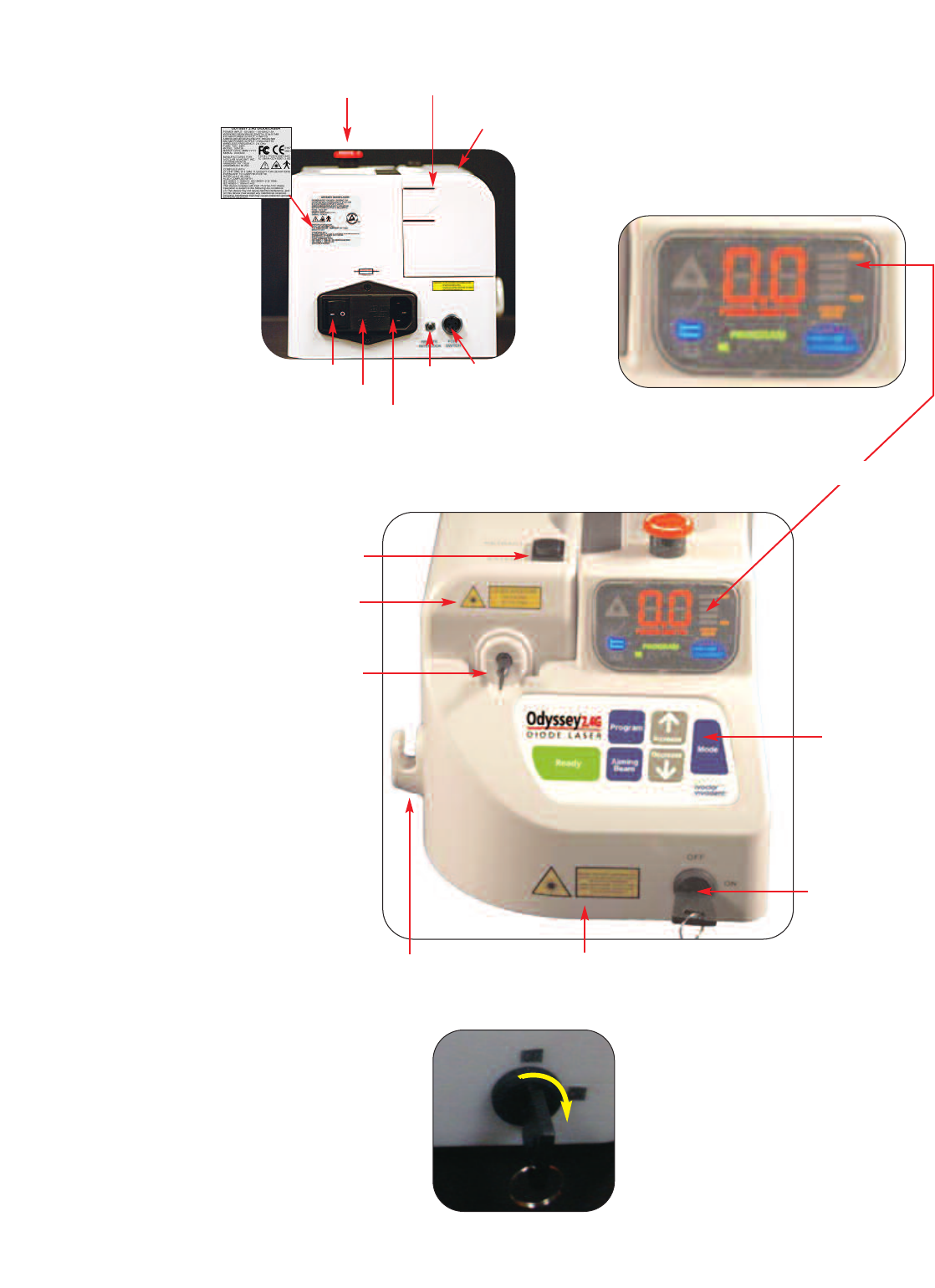
5
Figure 3.1 - Front Panel of the Laser
Figure 3.1a Key Switch Activation
Odyssey 2.4G Digital Display
LED Screen
Control Panel
Fiber Advance and
Retraction Switch
Key Switch
Hand Piece
Holder
Turnthe key 1/4 of a turnto
the right to turn on the laser
Fiber Aperture
ON
OFF
Label required by
Safety Standards
Label required by
Safety Standards
Figure 3.0
Back Panel of the Laser
Manufacturer’s
Specifications,
Regulatory and
General Information Disposable
Fiber Cassette
Foot Switch
Input Port
Power/Fan Switch
Emergency
Shutdown Fiber Cassette
End Cap Release
Power Plug Receptacle
Remote
Interlock
Connector
Fuse Receptacle
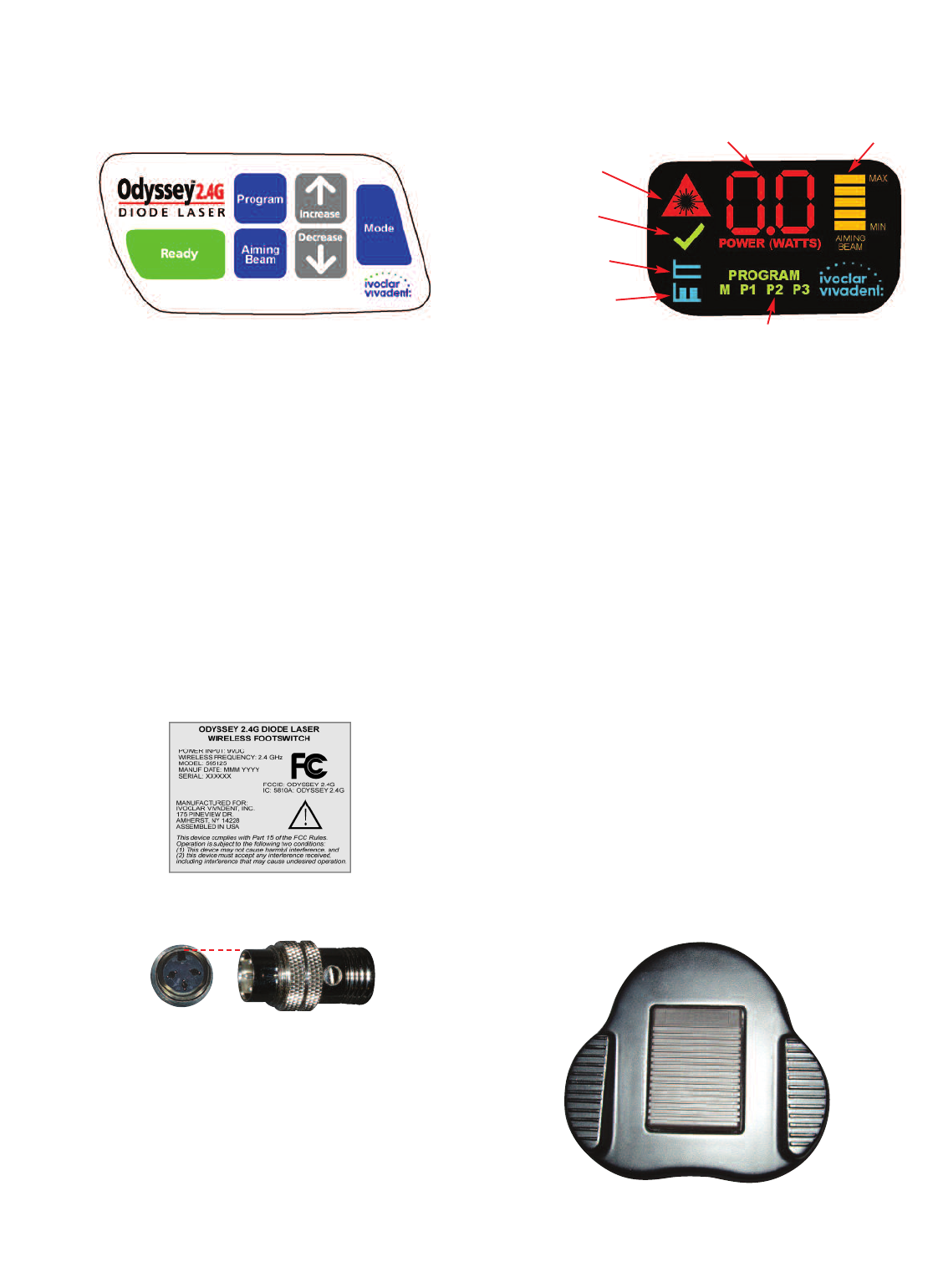
6
Figure 3.2 - Control Pad Settings
Figure 3.3 Cordless Foot Switch Input Port & Receiver Figure3.4 Cordless Foot Switch
Align the lip on the proximal end of the cordless receiver
with the notch at the top of the input port.
Mode: Press this key to toggle between Continuous and
Pulse mode.
Increase and Decrease: Use these to adjust the working
beam power. Hold the key to rapidly change the value.
Program: Press this key to select either manual (M) or one
of three user saved programs (P1, P2, P3). Each program
will save all of the parameters - working beam, aiming
beam and mode.
The settings can be changed as desired for any of the pro-
gram modes. To set the user defined program modes,
choose either P1, P2 or P3, set your preferred settings and
push the ready button. Upon activating the ready button,
the new settings will be retained.
Figure 3.2a - Display Indicators
Laser On: This illuminates when the foot pedal is
depressed. This indicates that the working beam (810nm)
energy is being emitted.
Ready Indicator: This illuminates when the READY key is
pressed. It will blink for 3 seconds, then remain steady.
Once it is steady on, the aiming beam will be activated.
Continuous and Pulse Mode: This illuminates when the
unit is in continuous mode. Use the MODE key to toggle
back and forth between Continuous and Pulse.
Working Beam Setting: Indicates the working beam
power output setting.
Aiming Beam Setting: Indicates the aiming beam set-
ting. Each bar represents about 20% of maximum capac-
ity.Thus 0 bars means the aiming beam is shut off.
Program Setting Indicator: Shows the current program
mode that is selected. Pressing the PROGRAM key will
cycle through the programs left to right, then back to
“M”.
Laser On
Indicator
Working Beam Power Setting Aiming Beam Setting
Ready
Indicator
Continuous
Mode
Pulse Mode
Program Setting Indicator
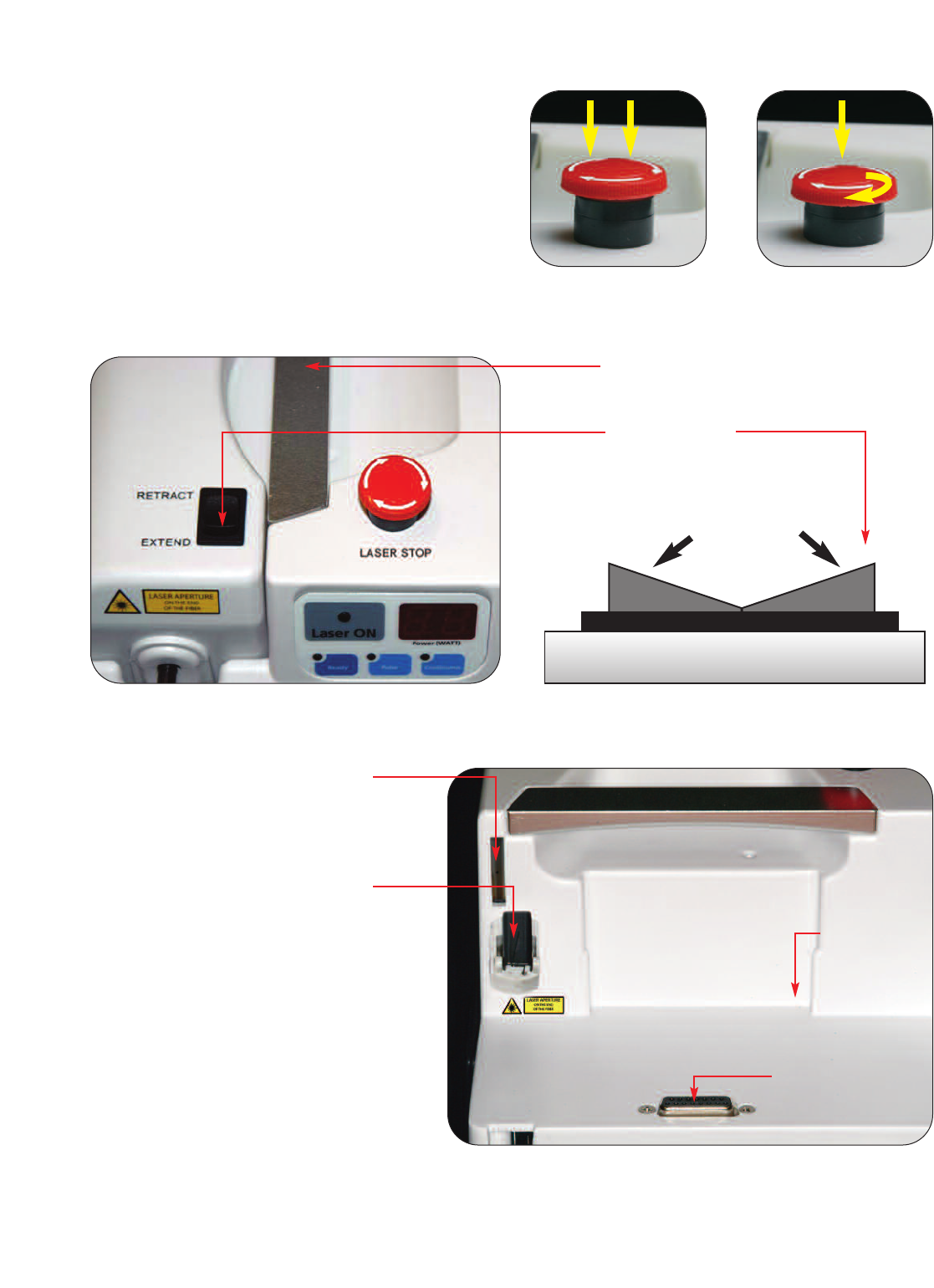
7
Check of the Emergency Shutdown System
1.Depress to shutdown (feel the click) Power is OFF in the
down position Emergency Shutdown Switch
2. Depress slightly and turn right 1/4 of a turn turn to release.
The emergency stop will pop up and the LED screen will light.
Figure 3.5 Figure 3.6
Figure 3.7 Figure3.7a Rocker Switch Activation
IN OUT
Aluminum handle
Fiber advance and retract rocker
switch (See below)
Depress the OUT or IN rocker switch
to advance or retract the fiber
Laser Aperture
with ST Connection:
The proximal end of the
fiber inserts hereand is
locked by turning the
locking hub to the right
Receiver for the Fiber
Cassette end cap
locking device
Figure 3.8 Laser Aperture (ST adapter) and power receiver for the
power coupling device on the base of the cassette.
Receiver for the Power
Coupling Device
Dove tail
Alignment guide
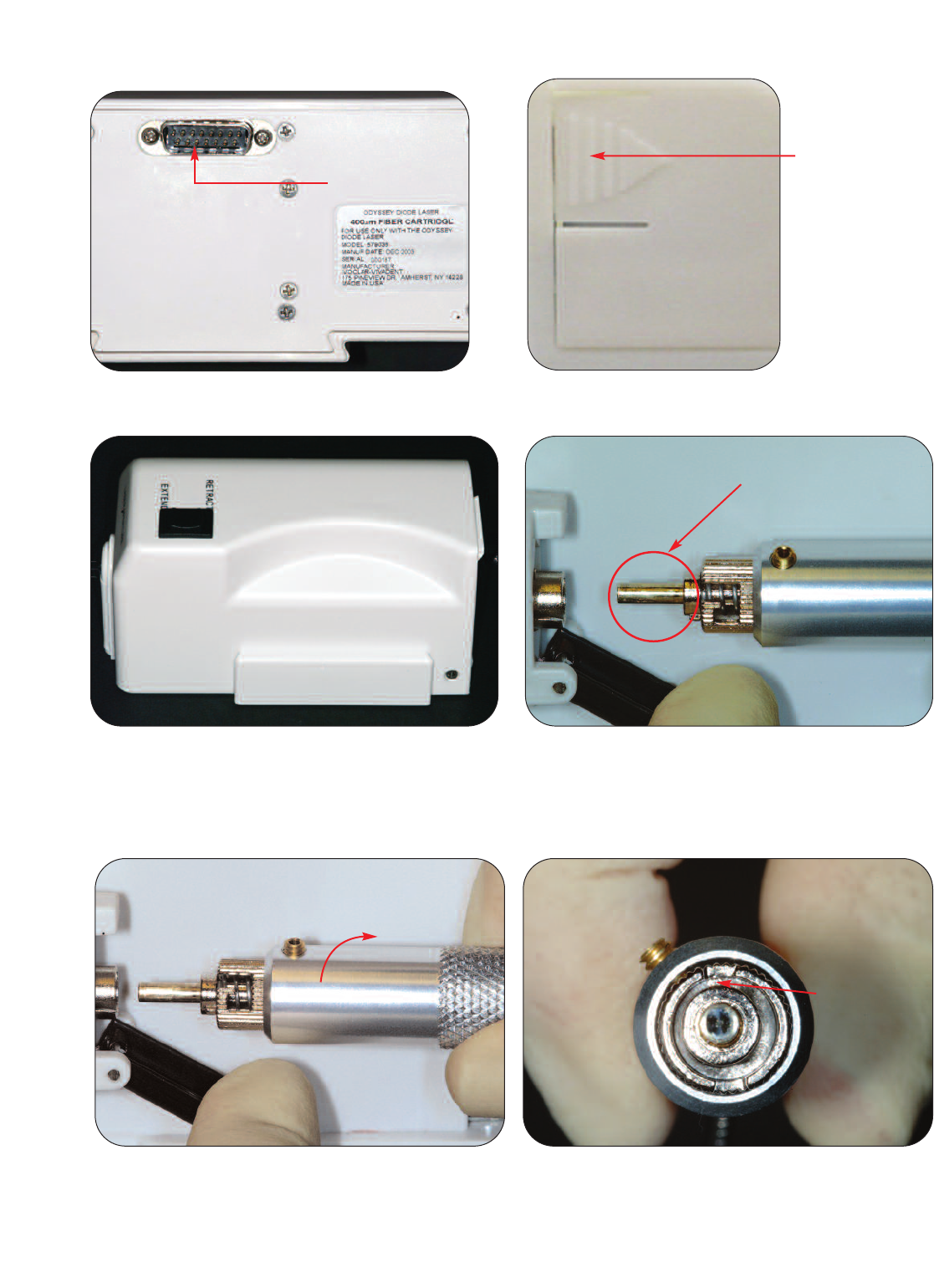
8
Depress at the base
of the arrow to
release the cover
for the fiber cassette
Figure 3.9 Base of the Fiber Cassette and the 15 Pin
Power Coupling Device Figure 3.10 Removable End Cap of the Fiber Cassette
Figure 3.13 Locking Hub Figure 3.14 Alignment Slot
Figure 3.11 Disposable Fiber Cassette without the
End Cap
15 pin Power
Coupling Device
The proximal end of the fiber extends from the internal wall
of the fiber cassette and must be attached to the laser by
inserting it into the Laser Aperture (ST adapter).
Once it is inserted into place, it is locked by turning the
locking hub approximately 1/8 turn to the right.
Figure 3.12 Fiber exit from the Disposable Fiber Cassette
Alignment slot
Proximal end

9
3.2 Evaluating the Facility and Environmental
Considerations (United States)
In order to insure the safe use of the laser in your facility,
please check to make sure that the proposed location has
the following:
3.2.1 Electrical Requirements
110 -120 V AC ±10 % at 60 Hz
3Amps
Frequency range 45 - 63 Hz
9volt DC Alkaline battery
3.2.2 Heating and Ventilation
The room where the laser is used should have good
cooling and heating system so that the laser can be
operated within the optimum range of 20º - 30ºC (68º - 86º F).
Avoid storing or transporting the laser in temperatures below
0º Celsius (32º F).
3.2.3 Lighting
Overhead lighting and or dental unit light should provide
enough illumination to allow good operator vision when acti-
vating the laser intra-orally.
3.2.4 Combustible Chemicals and Gases
All gases that are combustible or support combustion and are
used in the operatory area wherethe laser is in use must be
turned off during the procedure. Cleaning supplies or other
flammable chemical compounds should be stored in an area
away from the surgical site in order to avoid possible com-
bustion.
3.2.5 High Speed Vacuum Systems
Plume evacuation is a priority when vaporizing tissues. The
doctor and their chair-side assistants should keep themselves
and the patient safe by using a high volume vacuum system
and high filtration masks that are suitable for virus and bacte-
rial control.
3.2.6 Access and Visual
Access to the treatment area should allow the dental team to
restrict entrywhile the laser is in use. There should be a Laser
In Use warning sign placed in a designated area adjacent to
the entry into the treatment area. See Figure 7.0 on page 16.
4. Safety Considerations
The safe use of the Odyssey is the responsibility of the
entire dental team including the doctor, the laser safety
officer appointed from the doctor’s staff, and the den-
tal team of auxiliary personnel. Protocols for the safe
use of lasers have been developed by a combination of
medical and dental professionals working in concert
with educators at the university level, scientists and laser
manufacturers. Dental professionals have had to
develop protocols and guidelines for using the laser on
oral soft tissues. Sound judgment and the concern for
patient safety should be the basis of all laser care. The
following entities have influence over laser use.
4.0 Food and Drug Administration
Manufacturers of products subject to performance standards
under the Federal Food, Drug, and Cosmetic Act, Chapter V,
Subchapter C - Electronic Product Radiation Control are
required to certify compliance with the regulations and fur-
nish various reports to the Center for Devices and Radiological
Health (CDRH)). For medical laser manufacturers, additional
review by the FDA of the safety and effectiveness of the
device is required. Companies who intend to market a med-
ical laser today must receive authorization from the FDA to
permit the device into commercial distribution. There are two
forms of premarket clearance procedures. The premarket
notification (510(k)) procedure is principally used for those
devices that are documented to be substantially equivalent to
legally marketed Class I and Class II devices. For new devices
not equivalent to legally marketed devices, a morecomplex
PMA is required.
4.1 Wireless Technology
In order to promote efficient use of the radio spectrum in var-
ious global markets the US FCC (Federal Communications
Commission) and other international government agencies
have developed technical standards for devices that arecapa-
ble of emitting radiofrequency energy when in use – such as
wireless data cards. These products need to receive certain
identification numbers in accordance with the Commission
Equipment Authorization rules prior to marketing in US mar-
kets. The FCC certification is similar to the CE certificate for
the European markets.
The Code of Federal Regulations, Title 47 (47 CFR), Part 15
covers the rules for the operation of unintentional, intention-
al or incidental radiators. Any electrical or electronic devices
incorporating a digital circuitry and operating with an oscilla-
tor or clock speed of greater than 9kHz requires approval to
this rule. There are various types of FCC Part 15 approvals,
pending on the nature of the product and its intended use.
In Canada, IC-RSS 210 (Radio Standards Specification) sets
out the requirements for license exempt low-power inten-
tional radiators. This standardis veryclosely harmonized in
terms of permitted frequencies, types of operation, and other
technical requirements to the FCC requirements, but a sepa-

10
rate certification application is required for Canada.
In the European Community, compliance with several safety
directives and testing to EN 300 328, EN 60950 and EN 301
489 is required for this type of device. The manufacturer is
required to provide a Declaration of Conformity as evidence
of its compliance with the various regulatory requirements.
4.2 Statutory Licensure
Usually, states do not have a specific licensure requirement for
use of a laser by a dentist. Most states require a hygienists to
attend licensure training that includes both a lecture and
hands-on training. Prior to using the laser, the hygiene appli-
cants are required to pass a proficiency test for certification.
These courses are usually taught by members of the Academy
of Laser Dentistry who possess instructor credentials.
4.3 OSHA and its Provisions
Worker safety is the responsibility of the employer and is
regulated by OSHA (Occupational Safety and Health
Administration), a division of the U.S. Department of Labor.
OSHA has issued no specific standardfor safe use of lasers but
recognizes ANSI standard Z136.1 as a source for analyzing
safety with respect to medical lasers. For moreinformation
see OSHA Technical Manual (TED 1-0.15A) Section III, Chapter
6, 1999. Ivoclar Vivadent Inc. recommends implementation of
aLaser Safety Program for the safety of your patients and
office staff in connection with the use of the Odyssey Diode
Laser.
4.4 Laser Safety Program
We recommend implementation of a Laser Safety Program
appropriate for your dental office. The plan may include the
following:
•Delegation of authority and responsibility for supervision
and control of the laser to a Laser Safety Officer;
•Minimum Training requirements for users of the laser
•Laser security against unauthorized use of the laser
•Standardoperating procedures to regulate the work envi-
ronment in order to protect the patient and office stafffrom
laser hazards.
The safe use of a laser is the responsibility of the Laser Safety
Officer (LSO) who can be a full or part-time employee, or the
laser operator. It is their responsibility to train the staff, main-
tain records concerning training and the laser’s performance,
performsafety checks and preparethe laser for use on a daily
basis. The LSO must keep records of any incidents that relate
to the failure of the laser or any adverse effects related to laser
therapy and reportsuch incidents as prescribed by law. The
laser safety officer assures that a medical follow-up has been
sought or has occurred following any adverse incident during
treatment. The LSO is responsible for the training of all office
personnel who areinvolved with the laser preparation and
use. Daily checks of the facility and equipment are also the
LSO’s responsibility. The LSO should test fire the laser each day
prior to beginning each treatment procedure. For more infor-
mation on the contents of a Laser Safety Plan, you can review
ANSI Standard Z136.3 for Safe User of Lasers in Health Care
Facilities or TR IEC 60825-8 Guidelines for the Safe Use of
Medical Laser Equipment.
4.5 Continuing Education
The laser safety officer should insure that the operator and
staff attend laser courses taught by qualified laser educators.
Ongoing reviews of laser safety procedures should be a part
of normal office routine.
4.6 In-office Safety Issues
4.6.1 Lighting: Always use the Odyssey in a well lighted and
ventilated area. Make certain that chemicals or gases capable
of supporting or causing combustion are not present when
using the laser. Use high volume vacuum to remove the laser
“plume” and provide a high filtration masks for all people
present in the treatment area during lasing.
4.6.2 Safety Eyewear: While using the Odyssey laser, doctors,
auxiliary staff, patients, and anyone attending them in the
operatory must wear the appropriate safety eyewear that has
been designed for use with the 810 nm wavelength. Never
point the laser tip directly at the face, eyes or skin of anyone
while emitting energy.The aiming beam is also capable of
causing eye damage
4.6.3 Test Firing the Laser: Always test-fire the Odyssey prior
to using it intra-orally. Using a power of 1 Watt continuous
wave or less, place the laser in the ready mode. Then, activate
the laser for 1-2 seconds while aiming the fiber onto a 2X2
gauze sponge wetted with water.Do not use alcohol or any
other combustible material to wet the 2X2 sponge as it may
ignite.
4.6.4 Power Changes With Fiber Changes: Switching to a
smaller diameter fiber will increase the density of the power
at the fiber tip. As a result, you may need to adjust your
power downward. Increasing the power may be required
when switching to a larger diameter fiber. In order to achieve
the same rate of work after changing fiber diameters, remem-
ber this: a smaller diameter fiber will require less power and
conversely, a larger diameter will require more power.
4.6.5 Fiber Preparations: After cleaving and stripping the fiber,
photo-initiation of the fiber tip will allow the operator to
remove tissue morerapidly. Gingival debris on the tip will
retain the heat and it should be removed. The tip will also
begin to blacken and deteriorate as it retains the heated
debris and can break if not removed by cleaving it. Clean the
tip often using a 2 X 2 gauze sponge moistened with water.
Do not use combustible liquids to moisten the 2 X 2.

4.6.6 Danger - Laser In Use Signage: Each operatory where
the Odyssey is used should have a “laser in use” sign placed at
the operatory entrance when a procedure is in progress. This
signage will help to eliminate eye damage caused by inadver-
tent exposure to laser energy. See Figure 7.0 on page 30.
4.6.7 Sharps Disposal and Sponge Removal: Remove cleaved
fiber remnants and place them into a sharps container for dis-
posal. All sponges used for cleanup of lasers and fibers
should be disposed of in a bag for contaminated soft prod-
ucts.
4.6.8 Plume Evacuation: Use high volume evacuation suction
during procedures to remove laser smoke or ‘plume’. debris.
Use masks suitable for viral filtration. Caution - laser plume
may contain viable tissue particulates.
4.6.9 Key Switch and Mode Selection: When the key switch
is in the ON position (turn to the right), the laser has been
enabled and can be activated while in the READY status.
When not in use, insure that the key has been turned off or
that the laser is placed in the STANDBY status.
4.6.10 Safety Education: Provide comprehensive safety proce-
dure training for all office personnel and include the staff in all
outside laser courses you attend when possible. Be certain
that all members of the dental team understand how the laser
works and can advise patients as to their safety and advan-
tages over conventional procedures.
4.6.11 Laser Security: To prevent the unauthorized use of the
laser while not in use, the key should be removed from the
unit and maintained by the Laser Safety Officer.
4.6.12 Emergency Shutdown Options:Any of these
mechanisms can be used to shut down the emission of laser
energy in a real or perceived emergency.
1. Depress the emergency shutdown button
2. Foot switch – remove your foot to stop lasing
3. Key – turn off the key
4. Switch the Power/Fan to the off position (O)
5. Power Cord–unplug from the wall outlet
4.6.13 Hard Tissue Procedures: The Odyssey diode is not an
appropriate laser for hardtissue procedures. The laser is
attracted to melanin, hemoglobin and to some extent to
water and oxygenated hemoglobin. Avoid prolonged expo-
sure of the energy when working in and around the cervical
areas of the tooth. Due to the thin layer of enamel in this
area, the laser’s energy may be absorbed by the hemoglobin
in the pulp and pulpal hyperemia may occur. Extended expo-
sureto laser energy could lead to pain and possible pulpal
necrosis.
4.7 American National Standards Institute
(ANSI) - Safety Standards
ANSI is a non-governmental, non-profit agency that has
established guidelines and safety standards for the use of
lasers and other electro-optics. The provisions of ANSI Z 136.3
outlines standards for lasers used in dentistry and the assess-
ment of laser risks. ANSI also establishes guidelines for safe-
ty eyewear and classifies all lasers based on their potential for
damage to eyes or tissue.
5. Operating the Laser
The Odyssey will deliver energy in either a Continuous Wave
(CW) mode or in a pulsed mode which are called temporal
emission modes (time related modes). Selecting the appropri-
ate mode is a factor of controlling target tissue temperatures
and the efficiency of energy delivered. The pulse duration (.5
seconds) and the number of pulses per second (1) have been
fixed by the manufacturer using a 50 % duty cycle and you will
therefore need only to change the power and mode.
5.0 Standby and Ready Status
Once you have turned on the power /fan switch on the back
of the laser and the key switch on the front, you will see the
laser LED screen light up. The status of the laser will be in
Standby which is a non-active status. The laser will not emit
energy while in Standby,even if you depress the foot switch.
On the left of the control panel you will see the ready button.
See Figure3.2. Press this key to place the unit into the ready
status. When this key is pressed whatever settings are dis-
played on the unit will be saved into the unit’s memory for the
program setting shown. The settings saved into the three pro-
grammable modes will be retained even if the laser is turned
off. Any adjustments to the settings after the laser is in the
ready status will not be saved to memory. The laser will now
be ready to emit energy as you depress the foot switch.
5.1 Continuous Wave Mode
In setting up the laser while in the CW mode, you will deliver
the amount of power in one second that you have set the laser
for.i.e. Set the laser for 2 Watts CW and while in the ready
mode, the laser will deliver 2 Watts per second as long as you
have the foot switch depressed. The CW mode is generally the
fastest way to ablate tissues but heat can build up and cause
collateral damage to the target and adjacent tissues. Cool the
tissues being lased by using periodic blast of air from a triplex
syringe. You may use water to cool in areas where there is pro-
longed exposure to the laser’sbeam. Avoid using the air
syringe when you have an opening in soft tissue adjacent to or
within the surgery site. An air embolism may occur as a result
of air captured within the tissue during the cooling process.
5.2 Pulsed Energy Mode
Pulsing the laser energy will allow some cooling of the tissue in
between emissions of energy.The “duty cycle” is the percent-
age of the time in each second that the laser is emitting ener-
11

12
gy. The pulses per second, the duty cycle and the energy inten-
sity per pulse will determine your average power. In the pulsed
mode, the Odyssey is programmed to deliver 1.0 pulse per sec-
ond with each pulse lasting for 0.5 seconds. The duty cycle is
set for 50% so you will have 1 energy pulse with 1 period of
rest with no energy between each pulse.
If the laser is producing energy at 1 time per second for 0.5
seconds per pulse, you will be producing energy for a total of
0.5 seconds. The result will be an average power per second
that will be 0.5 of what you have set the laser for. Therefore,
when using pulsed energy, you will have to adjust your power
upward in order to achieve the same rate of work as the same
power set in CW. 2 Watts of Pulsed energy will be the same
average power output as 1 Watt CW.
5.3 Tissue Responses to Laser Energy
Maximum results will be achieved by regulating the power and
the speed that the operator moves the fiber tip. Tissue
Charring is an undesirable after effect of too much power or
the tip moving too slowly. Always use the least amount of
power necessary to complete your procedure. The ideal tissue
response will show little or no discoloration after lasing and
there will be less residual damage and faster healing. Avoid
penetrating or damaging the periosteum, and do not use the
laser on alveolar bone. Because the laser energy is attracted to
melanin and hemoglobin, power must be reduced when treat-
ing patients with dark skin. Always begin lasing with the low-
est power you can use to remove or modify the target tissues.
Avoid damage to the gingival sulcus by moving the fiber tip
quickly and using a power below 1.5 Watts. Check to make
sureyou have a good cleave of the fiber so that no shardis
present on the tip. A shardmay act as a miniaturescalpel and
damage the small blood vessels, thus preventing hemostasis
and coagulation. (See Fig. 5.1)
Figure 5.1
5.4 Fiber and Hand Piece Care
Do not continue to use the fiber tip once you have observed
that the tip has a blackened appearance that is greater in
length than 2-4 mm from the previous cleave spot. See
(Figure 6.1) The protein debris of gingival tissue accumulates
on the tip during surgery and retains extreme heat that can
cause rapid tip deterioration and subsequent breakage. This is
especially important when using the laser for periodontal
pocket debridement. During surgery, clean the tip often
using a 2 X 2 sponge moistened with water. Do not use alco-
hol or other combustible liquids to moisten the 2 X 2 gauze
sponge and do not use the sponge while the tip is hot.
Always use a cold disinfectant solution like BIREX to wipe off
the fiber jacket before retracting the fiber. The fiber can be
advanced or retracted by using the “rocker switch” on the
top of the fiber cassette. The hand piece should be auto-
claved after each patient and a new disposable tip applied.
Dispose of the cleaved tip in a “Sharps” waste receptacle.
Be advised about the potential hazards when inserting, steeply
bending or improperly securing the fiberoptics to the chassis.
Radiation exposure may occur in these instances which could be
harmful to yourself, your staff and your patient. Special care
should be taken not to break or snap the fiber.
As the aiming beam passes down the same delivery system as the
Working Beam, it provides a good method of checking for
integrity of the delivery system. If the aiming beam spot is not
present at the distal end of the delivery system, its intensity is
reduced or it looks diffused, this is a possible indication of a
damaged or not properly working delivery system.
5.5 WARNING- !!!! DO NOT PLACE THE FIBER AND FIBER
CASSETTE IN THE AUTOCLAVE TO STERILIZE THE SYSTEM.
USE COLD DISINFECTING SOLUTIONS TO WIPE DOWN THE
FIBER AND THE EXTERIOR OF THE LASER FIBER CASSETTE.
5.6 Systems Procedures
5.6.1 Treatment Area Requirements The laser should be
placed in an area with good ventilation and lighting. The elec-
trical service required is a 110 Volt AC outlet - 60 Hz. The area
wherethe laser is placed should be free of standing water.
Combustible gases or those that support combustion should
be turned offand all flammable materials or chemicals stored
in the area should be removed.
5.6.2 Foot Switch. Check to see that the foot switch receiver
is installed properly and locked. Be sureto replace your
batteryevery 90 days or whenever the foot switch fails
to respond.
5.6.3 Fiber Cassette. Before using the laser, check the fiber
cassette to see that it is firmly seated. Depress the extend/
retract rocker switch on the cassette to see that it is function-
ing properly. After Checking the Fiber Cassette Power, expel
some fiber from the cassette.
5.6.4 Fiber Preparation. You will want to have approximately
3feet (1 meter) of fiber available to strip the fiber, cleave the
fiber, initiate the fiber and disinfect the fiber (See Section 6.1).
When the fiber is prepared, the hand piece and tip should be
attached (See Section 6.3). Once prepared place the hand
piece into the holder on the side of the laser. See Figure 3.2 on
page 6 and Figures 3.7 and 3.7a on page 7. The rocker switch
for fiber cassette operation should not be depressed during
laser operation.
5.6.5 Emergency Shutdown Button. Check the Emergency
Shutdown Button to see that it has not been depressed. If it
Fiber with
ashard
(a bad cleave)

has, release it by depressing it slightly as you turn it 1/4 turn
to the right.
5.6.6 Key Switch. Turn the Key Switch on the front of the
laser to the “on” position by turning it approximately 1/4 turn
to the right (clockwise). The control panel should light up and
show the laser is in Standby Mode.
5.6.7 Setting Parameters. Review your power and mode
requirements and then depress the mode button to select
either CW or pulsed mode. The mode you have selected will
be displayed just below the LED screen and will be designat-
ed by a small light in the corner of either the pulse or CW
panel display. See Figure 3.2 on page 6.
5.6.8 Select Your Power by pressing the up or down arrow
until you have reached the desired Wattage. Beginning with
alow of 0.1 Watts, the power increases in increments of 100
mW up to a maximum of 5.0 Watts (CW ). By holding the up
or down arrow, you can have an un-interrupted increase until
you reach your desired power. See Figure 3.2 on page 6.
5.6.9 Aiming Beam The aiming beam can be turned on and
off by pressing the aiming beam button on the laser control
panel. Press this key to progressively increase the aiming beam
intensity from 0 (off) to full intensity. Press the key once more
to cycle back to 0. Each bar represents approximately 20% of
the aiming beam output. output.
Note that adjusting the intensity of the aiming beam,
has no effect on the output power of the primary laser.
5.6.10 Examine the Fiber Tip to insure that you have not
created a fiber tip shard during the cleaving process. The
shardcan act like a miniature scalpel and cause damage while
diffusing the light beam and lowering the laser’s power. See
Figure5.1 on page 11. See Section 6.1 for fiber preparation.
5.6.11 Depress the Ready Button and the aiming beam
should light after 2 seconds. Review your power and mode
requirements and then depress the mode button to select
either CW or pulsed mode. See Figure 3.2 page 6.
5.6.12 Test Firethe Laser outside the mouth by activating the
laser into a 2 X 2 gauze sponge that has been wetted with
water to prevent combustion. Do not use flammable liquids
to wet the sponge.
5.6.13 Depress the Foot Switch and make short quick strokes
at the lowest power that you can to remove the target tissues
while lightly contacting it.
5.6.14 Remove Your Foot from the foot switch and use a
clean 2 X 2 gauze sponge wetted with water to remove
debris from the fiber tip. Do not use flammable liquids to wet
the sponge.
5.6.15 Place the Laser in Standby Mode until you are ready to
start another procedure.
5.6.16 Cleave used fiber tip and discard in suitable biowaste
disposal.
5.6.17 Wipe the Outside of the Fiber using a disinfectant or
sterilization solution and then retract the fiber by depressing
the back of the rocker switch. Do not retract the distal end of
the fiber into the cassette.
5.6.18 Turnthe Key Offif you are not going to be starting
another procedure.
5.6.19 Recordthe Powers and total lasing times used for each
procedure in the patient’s chart. Example:
Name: Mary Jones
Procedure: Gingivectomy # 6 and # 7
#6 Lasing time 90 seconds @ 2.2 Watts CW air cooled
#7 Lasing time 60 seconds @ 1.5 Watts CW air / water spray
5.6.20 Odyssey Self Diagnostic and Monitoring: When the
Odyssey Laser’s microprocessor detects an issue with per-
formance it will immediately notify you by way of an audible
beep. There are two different ways in which the Odyssey will
alert you to any issues:
1. Continuous audible beep when footswitch is engaged.
If you are operating the Odyssey with the footswitch engaged
and the Odyssey emits a constant audible beep and stops the
beep when you release the footswitch, the microprocessor
has determined that the laser power output has fallen below
the set level. In this event the Odyssey Laser should be turned
offand allowed to sit for 5 minutes then turned on again. If
the Odyssey then performs without beeping, the micro-
processor has been able to make operational adjustments to
the laser and the unit will perform its functions. If, however,
upon restart the unit continues to beep when the footswitch
is engaged, the microprocessor was unable to adjust the unit
enough and the unit will need to be sent in for adjustment by
aqualified service center.
2. Continuous audible beep when the unit is turned on.
If you are operating the Odyssey and the Odyssey emits a con-
stant audible beep whether or not the footswitch is engaged,
the microprocessor has determined that the laser has either
low power or a general fault has occurred. In this event the
Odyssey Laser should be turned off allowed to sit for 5 min-
utes and turned on again. If the Odyssey then performs with-
out beeping the microprocessor has been able to make oper-
ational adjustments to the laser and the unit will perform its
functions. If, however, upon restart the unit continues to
beep, the microprocessor was unable to adjust the unit
enough and the unit will need to be sent in for adjustment by
aqualified service center.
13
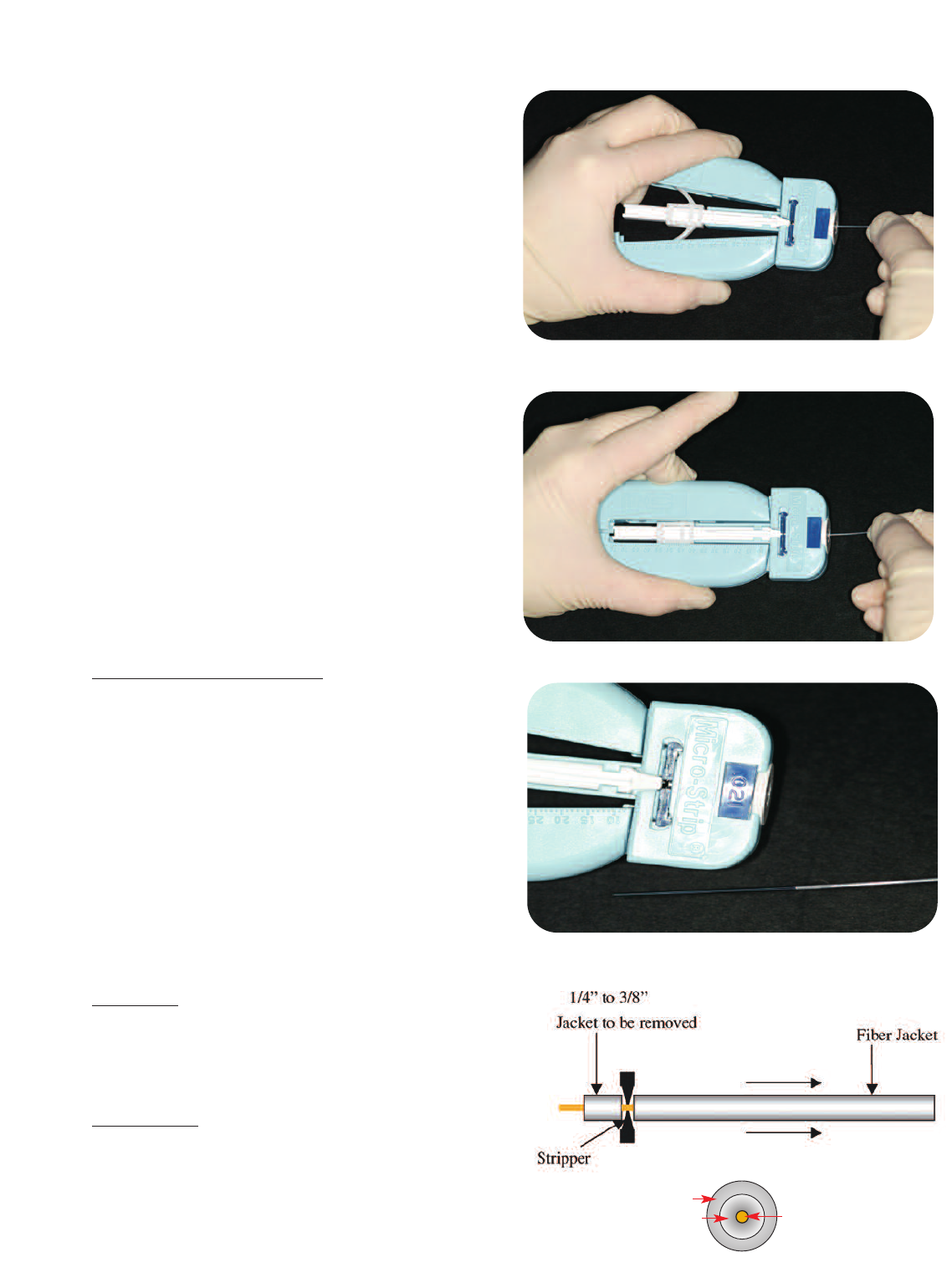
14
6. System Components:
Preparations and Care
The fiber optic element of a laser is responsible for carrying
the light from the diode array to the tissue being treated. The
dental laser fibers are usually made of quartz, sapphire, silica
or a combination of those elements. Quartz/silica is the most
popular product used in diode lasers.
Be advised about the potential hazards when inserting, steeply
bending or improperly securing the fiberoptics to the chassis.
Radiation exposure may occur in these instances which could be
harmful to yourself, your staff and your patient. Special care
should be taken not to break or snap the fiber.
As the aiming beam passes down the same delivery system as the
Working Beam, it provides a good method of checking for
integrity of the deliverysystem. If the aiming beam spot is not
present at the distal end of the delivery system, its intensity
is reduced or it looks diffused, this is a possible indication of a
damaged or not properly working delivery system.
6.0 Disposable Fiber Cassette
The fiber cassette is a removable assembly with a plug-in
capability that provides power for the internal retraction
device. This cassette is disposable after all fiber has been
used. This cassette is not autoclavable.
6.0.1 Replacing the Fiber Cassette: Ablack mark on the fiber
indicates 6’ of fiber remaining on the cassette. At this point,
anew fiber cassette should be ordered. When the cassette is
empty, it should be released from the laser aperture and
gently removed. Slowly lift the cassette up using the dove
tail as a guide. The fiber cartridge can be thrown away.
Note: Retain the end cap, do not discardthe end cap. Review
the installation procedure again on page 8.
6.1 Fiber Preparation
The fiber cassette contains approximately 20’ (6 meters +) and
is wound onto a spool. The fiber itself has three components:
•Jacket
•Cladding
•400 micron quartz/silica fiber
6.1.1 Jacket: This is the protective cover for the fiber system
and usually is made of a synthetic material that is clear or
white in color. There can be other colors used but there are
no standardized color systems to denote the diameter of the
fiber or its use.
6.1.2 Cladding: This is the material on the outside of the
quartz/silica fiber that is used to block the lateral escape of laser
energy as it traverses the fiber. During stripping, you may
“nick” the cladding and you will likely see the red aiming beam
light as it escape the site of the damage. This is not a danger if
all people in the area have the appropriate safety eyewear.
Figure 6.0 Adjustable Fiber Strippers
Figure 6.1
Figure6.1.1
Figure 6.1 Stripping the jacket
Cladding
Jacket Fiber
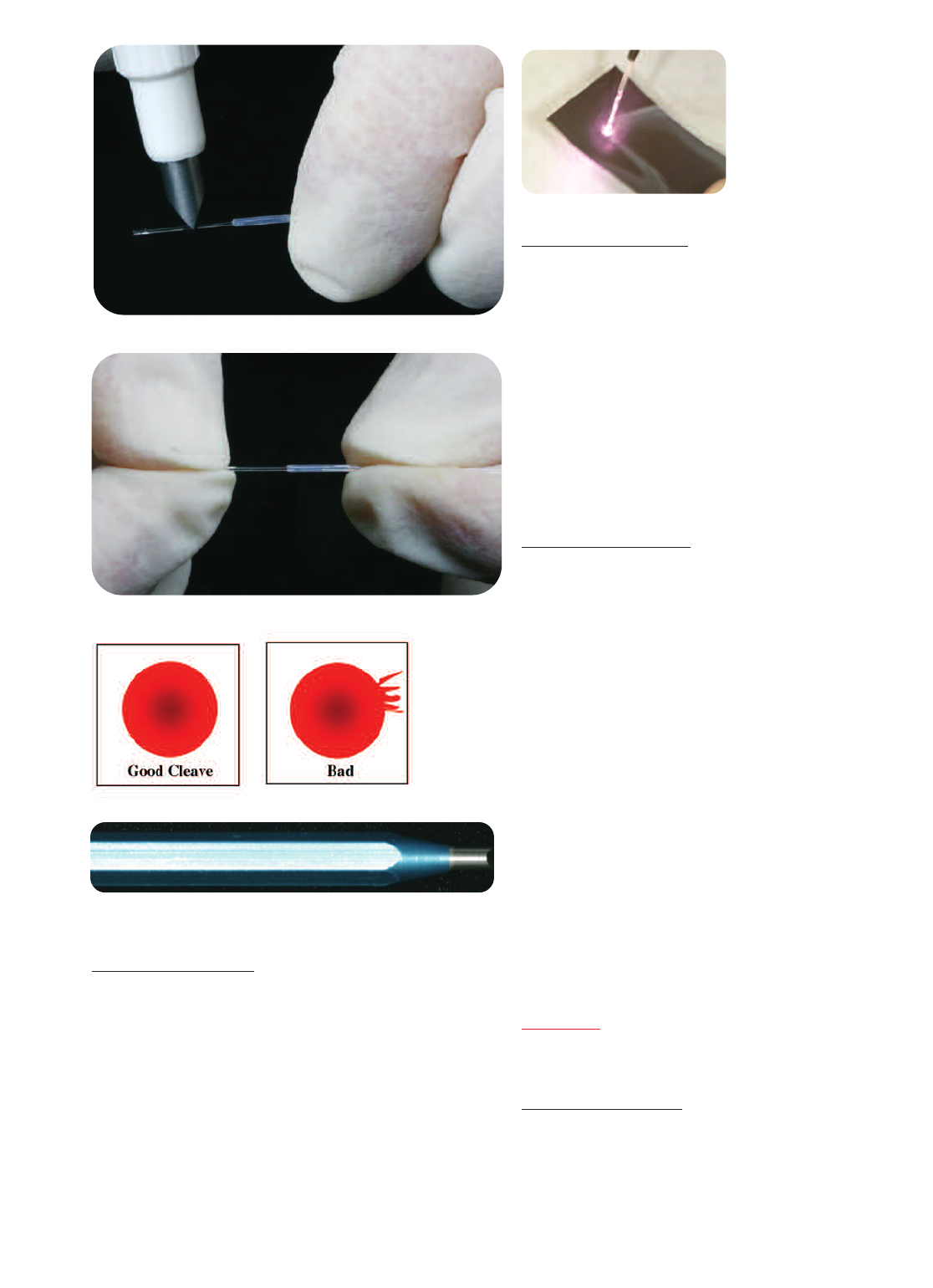
15
6.1.3 Quartz/Silica fiber: The fiber is fairly flexible but can be
broken if bent into a small circle or bent at an angle of 90
degrees. The cladding will burn as protein from the gingiva
accumulates on the fiber and will deteriorate the tip. It can
fracture if not cleaved once the blackened area has reached
3-4 mm. Stop lasing and wipe off the tip regularly as you
work to avoid accumulation of protein debris. Use water on
a2X2 gauze sponge to clean the tip. Do not use flammable
materials like alcohol products when cleaning a hot tip.
Dispose of all small fiber remnants after you have cleaved the
fiber. They should be kept in a small box with a lid until they
can be properly disposed of in the “sharps” container.
6.1.4 Stripping the Fiber: The fiber’s jacket is removed using a
“stripper”. Once a fiber tip is initiated and begins retaining
debris from the tissues during lasing, you will get a deteriora-
tion of the fiber tip. When you have a blackened tip that
extends 3-4 mm up the fiber shaft, it is time to cleave the fiber
and strip the jacket to prepare for the next procedure. Begin
by selecting enough jacket so that when it is removed, you
will have approximately 3/8” of bare fiber exposed. Place the
fiber in the stripper and grasp that portion of the fiber that will
have the jacket removed between your thumb nail and index
finger.See Figure 6.0. Grasp the fiber with the stripper by
applying pressure to the handles. With a slow steady force,
remove the jacket by pulling the fiber away from the stripper.
See Figure 6.1
6.1.5 Cleaving the Fiber.As the tip deteriorates, it is more
likely to fracture and could fall into the sulcus or a deep peri-
odontal pocket. Toavoid this problem, it is prudent to peri-
odically “cleave” the burned tip. The cleave is made after
stripping off the jacket to expose approximately 1-4” - 3/8”
of bare fiber. The cleave should be made at a point approxi-
mately 1/2” (8-10 mm) from the site of the previous cleave so
that there is no visible discoloration of the tip. The operator
should place their index finger at the spot of the proposed
cleave so as to stabilize the fiber.Using the pen style cleaver,
draw the cleave blade across the top of the fiber with enough
pressureto ”score” the fiber. See Figure 6.2. With the thumb
and index finger of each hand holding the fiber at a spot
approximately 1/2” on either side of the cleave mark, pull the
fiber in opposite directions. See Figure 6.2.1. Do not bend the
fiber to separate it because you will develop a poor cleave and
possible shard. After you have cleaved the fiber,point it per-
pendicular to a white piece of paper and place the laser in
READY mode. Hold the tip approximately 1/2” from the
paper and you should see a near perfect circle of red light. If
you have a large comet effect radiating from the circle, you
have not obtained a good cleave. If the circle has just a small
comet effect, it will probably work. See Figures 6.3 and 6.4.
WARNING:
Always dispose of the fiber tip remnants in the
“Sharps” container immediately after cleaving the fiber.
6.1.6 Initiating the fiber: The tip of the fiber should be cleaved
to provide a flat surface that can be prepared to retain heat
by introducing it to a dark material like ink, blood or water
color paints. The easiest way to preparethe tip is to lightly
move the flat surface of the tip across a piece of articulating
Figure6.5 Fiber Cleaver (Scribe)
Move the tip left or right
while lightly touching the
paper.
Warning: Using too much
power can start a fire on
the articulating paper.
Figure 6.2.1
Figure6.3 Figure 6.4
Figure 6.5.1
Articulating paper
Pull - Do not bend
fiber to separate.
Make one pass using light
but steady pressure.
Figure 6.2 Scoring & Cleaving
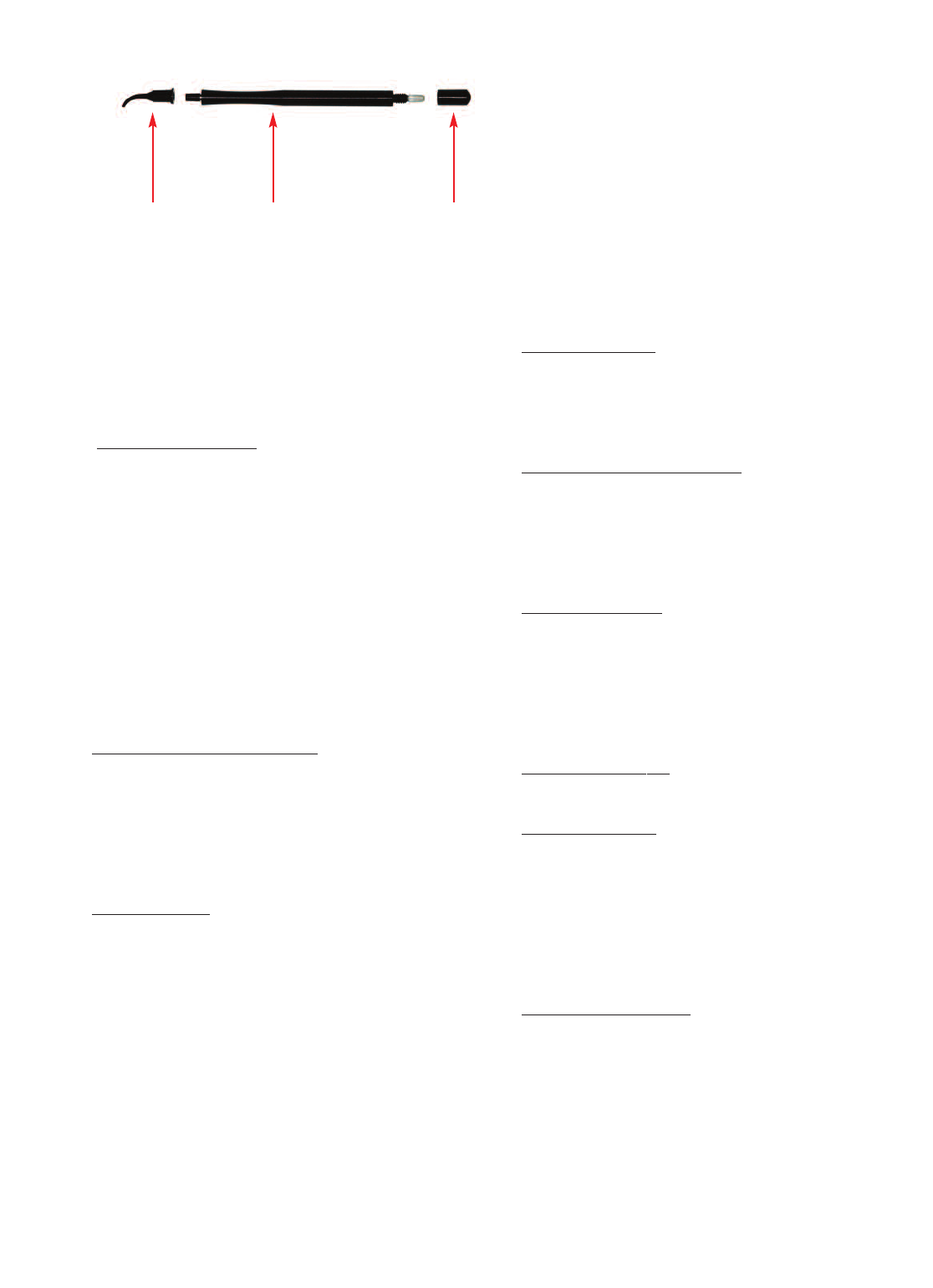
16
paper at powers of about 1 Watt CW. The tip will retain the
ink and the ink will make the tip glow if you exceed 1-2 sec-
onds while in contact with the paper. Prolonged heating will
accelerate the deterioration of the tip. See Figure 6.5.
6.1.7 Fiber Disinfection: The fiber and spool remain in the
fiber cassette and are not autoclaved while in the cassette.
Once stripped, cleaved and initiated, the tip will reach tem-
peratures of several hundred degrees centigrade, thus, as the
laser emits energy, it will rid the tip of pathogens. Additionally,
the tip can transfer heat up the shaft of the fiber to the edge
of the jacket which may melt slightly. After your procedure,
always cleave the blackened tip and strip the damaged jack-
et. Wipe the jacket down using BIREX™,CIDEX®or a compa-
rable product that can disinfect the jacket. Dry the jacket
using a clean 2X2 sponge prior to retracting the fiber into the
fiber cassette.
6.2 Laser Maintenance
6.2.1 Laser Chassis Disinfection: The exterior of the laser
should be cleaned using a liquid disinfectant similar to BIREX™
or CIDEX®.Do not spray the disinfectant directly on the chas-
sis. Apply with a gauze sponge or wipe. Do not use abrasive
materials to clean the system. Place a barrier material similar
to cellophane over the control panel and LED screen prior to
treating the next patient
6.2.2 Calibration: The Odyssey Laser uses solid-state circuitry
to continuously monitor the power output, and adjusts the
power supplied to the laser module to keep the output con-
sistent with the user defined setting. If output levels aremore
than ±20% of the set value, the unit is designed to shut
down power to the laser, and an audible alarm will sound. If
this happens, the unit should be turned offand allowed to sit
for 5 minutes and turned on again. If the laser then performs
without beeping, the microprocessor has been able to make
operational adjustments and the unit will perform its func-
tions. If, upon restart, the unit continues to beep, the unit will
need to be sent in for adjustment by a qualified service center.
We suggest that your practice establish an internal calibration
program for your laser.Recalibration is recommended a
minimum of once per year based on average useage.
Recalibration may be performed by the manufacturer by
returning the unit. In the alternative, you may purchase a cal-
ibrated hand held power meter approved for use with 810nm
devices to check power output. The laser should be set at 1,
3and 5 Watts with output checked at each level. The output
display should be within 20% of the meter reading. If not,
recleave the fiber and re-check. If the output display is still
outside the 20% tolerance, return the unit to the manufac-
turer for recalibration. There are no methods available for the
user to adjust the calibration of the unit and the unit chassis
must not be removed by the user for any reason.
6.3 Hand Piece Preparation
6.3.1 Autoclavable. The hand piece for the Odyssey is an
autoclavable material that should be cleaned with warm
soapy water, rinsed, bagged and autoclaved after each
patient.
6.3.2 Hand Piece Components. The hand piece has three
(3) components:
a. Body
b. Disposable Tip
c. Fiber locking collar see Figure 6.6 below
6.3.3 Rocker Switch. Using the rocker switch on the top of
the fiber cassette, press the switch at its most anterior position
(toward the front of the laser). Express 3-4 feet of fiber and
feed it through the fiber locking collar after you have
loosened the collar. The fiber should extend about 1 foot
beyond the distal end of the hand piece so that you can strip
the fiber and place the disposable tip.
6.3.4 Disposable Tips. The disposable tips can be shaped to
provide the clinician any degree of access required.
6.3.5 PrepareFiber.Using your stripper, remove approxi-
mately 1/4 - 3/8 inch of jacket from the distal end of the fiber.
Cleave the fiber and examine the results by turning the laser
to the Ready status. The aiming beam should create a near
perfect circle when directed onto a white surface from about
1/4 - 3/8 inch above the paper. See Figures 6.3 and 6.4 on
page 14. Once cleaved, the fiber tip should be disinfected
(See Section 6.1.7).
6.3.6 Mounting the Tip. After selecting your tip, straighten
it using your thumb and index finger.Begin at the proximal
end of the tip and feed the stripped end of the fiber through
the straightened tip until only bare fiber is extending beyond
the disposable tip. Gentle slide the disposable tip onto the
distal end of the hand piece and pull the fiber from the prox-
imal end until the disposable tip is almost seated on the hand
piece body. Seat the disposable tip securely on the hand piece
body and tighten the locking collar. You may now shape the
disposable tip to the desired form. Press the rocker switch to
make sure the fiber moves freely. You should now initiate the
fiber tip if your procedurecalls for it.
Disposable Tip Body Fiber Locking Collar
Figure 6.6 Hand Piece with disposable tip
and fiber locking collar
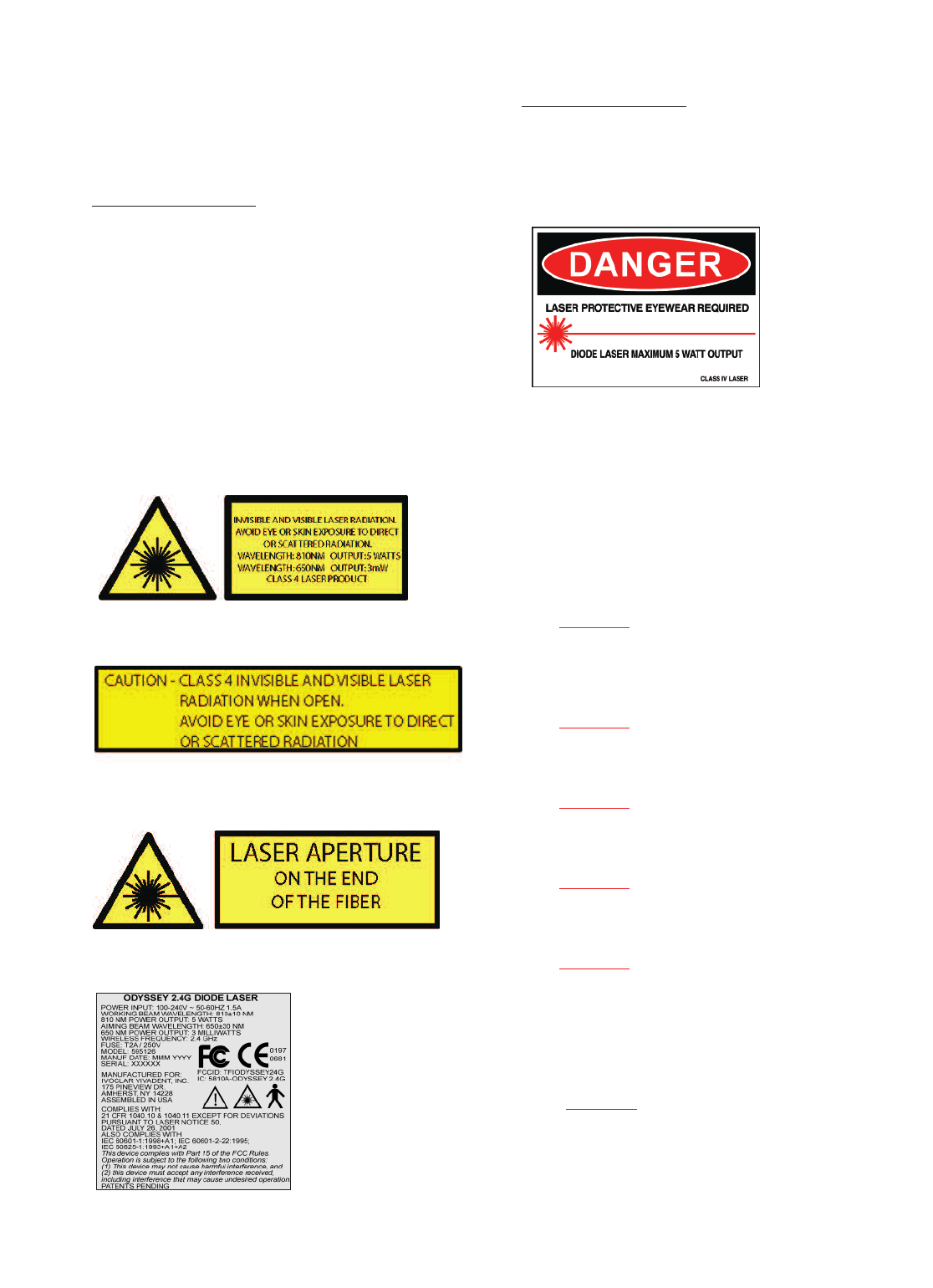
17
7.0 Labels, Signs, Warnings and
Manufacturer’s Information
7.1 Federal Compliance. The Odyssey Diode Laser has been
certified to the latest safety standards applicable to medical
lasers in the US and Canada including IEC 60825, IEC 60601-
2-22, IEC 60601-1 and the Food and Drug Administration’s
Laser Performance Standard (21 CFR 1040.10 and 1040.11).
The laser has also been certified and tested according to the
telecommunications regulations for the US (FCC Part 15) ,
Canada (IC RSS 210) and the European Community (EN 300
328, EN 60950 and EN 301 489). Various labels are included
on the laser and the wireless foot switch as evidence of con-
formity to these requirements. The labels on the units are
required under these standards for safety purposes and should
not be removed. Please review all labels prior to using the laser.
See Figures 7.0.1, 7.0.2, 7.0.3 and 7.0.4.
7.2 Danger Laser in Use –Each treatment area should have a
“laser in use” warning sign posted at the entrance to the
treatment area. This signage serves to warn people to not
enter the treatment area without proper safety eyewear an
protective clothing when the laser is in use. See Figure 7.1.
7.3 Class 2 Laser Product - (Aiming Beam laser)
630 - 660 nm 3 mW
7.4 Class 4 Laser Product - (Treatment laser)
810 nm 5 W
7.5 CAUTION
Changes or modifications not expressly approved by
Ivoclar Vivadent, Inc. could void the user’s authority
to operate the equipment.
7.6 CAUTION
Laser Radiation - Avoid exposureto the eyes
or skin from direct or scattered radiation
7.7 CAUTION
This product contains no user serviceable components
within the chassis. Visible and invisible radiation may
be present when the cover is removed.
7.8 CAUTION
US Federal law restricts this device to sale by or on the
order of a licensed dentist.
7.9 CAUTION
Eyewear that protects your eyes from wave lengths
other than 810 nm do not provide proper protection
for use with this laser.Damage to the retina or corneal
may be irreparable if exposed to direct, reflected or
scattered radiation.
7.10 CAUTION
Use of controls or adjustments, or performance of
procedures other than those specified herein may
result in hazardous radiation exposure.
Figure 7.1 Label to be posted at entrance
to treatment area
Figure7.0.3 Laser ApertureLabel
Figure 7.0.4 Rating Label with Serial Number
Figure 7.0.2 Label required under FDA Laser Notice 50
Figure 7.0.1 Label required under FDA Laser Notice 50
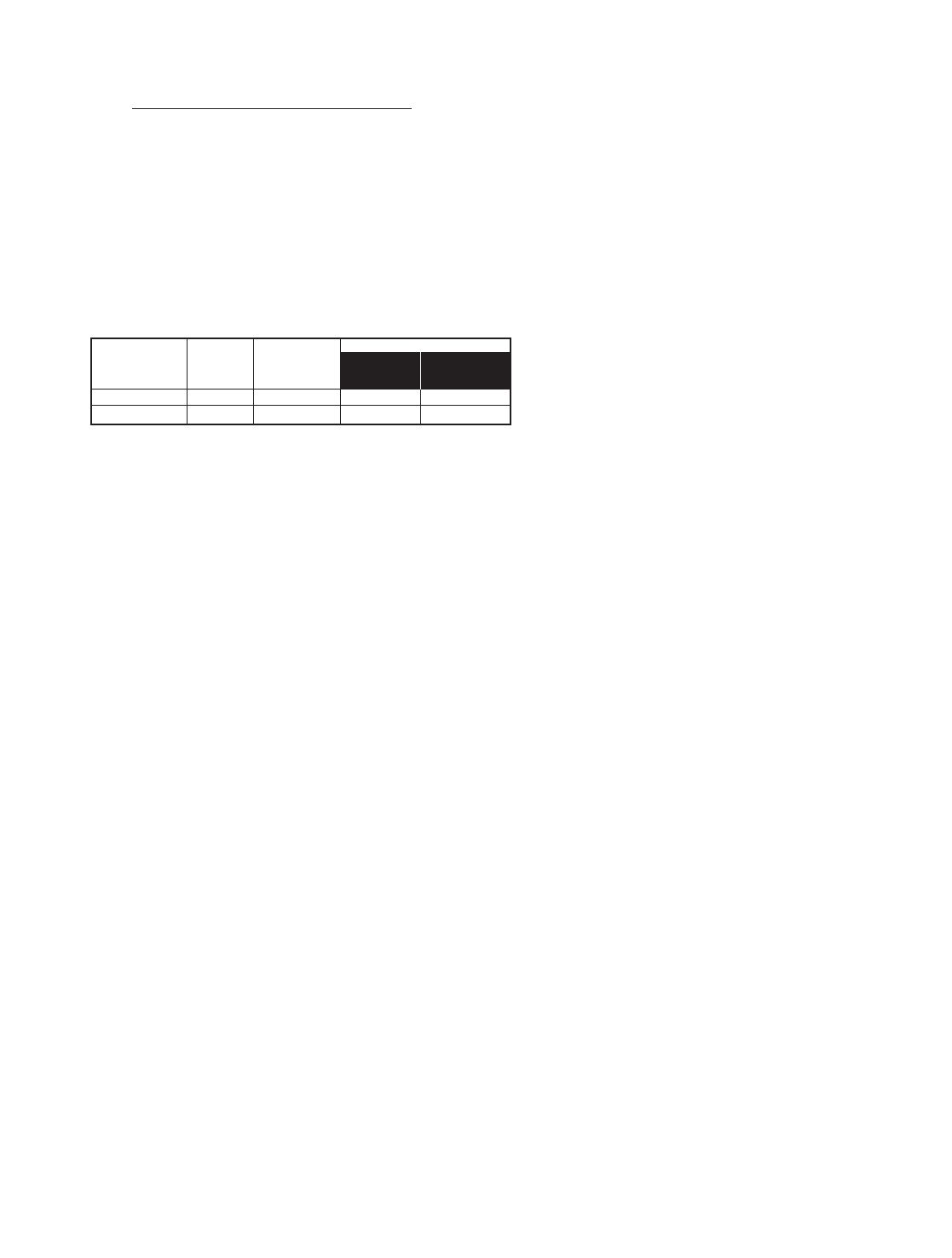
7.11 Nominal Ocular HazardDistance (NOHD)
The NOHD is the distance beyond which the exposure during
normal operation is not to exceed the appropriate Maximum
Permissible Exposure (MPE). The NOHD for persons wearing
safety glasses is shown in Table 1 below. The Nominal Hazard
Zone (NHZ) is the area where the laser source within which
exposure levels exceeds the MPE (which is the highest level of
laser radiation to which a person may be exposed without
hazardous effects or adverse biological changes in the eyes or
skin). The outer limit of the NHZ is the NOHD. Eye Protection
within the NHZ is mandatory.
Assumptions: Maximum Laser Power = 5 Watts Direct viewing angle=0˚, reflectance viewing angle=20˚, reflectance coefficient of tissue=0.001
Table 1 - Nominal Ocular Hazard Distance (NOHD) for various
viewing conditions while wearing eye protection.
NOTE: This equipment has been tested and found to comply
with the limits for a Class A digital device, pursuant to Part 15
of the FCC Rules. These limits are designed to provide rea-
sonable protection against harmful interference when the
equipment is operated in a commercial environment. This
equipment generates, uses, and can radiate radio frequency
energy and, if not installed and used in accordance with the
instruction manual, may cause harmful interference to radio
communications. Operation of this equipment in a residential
area is likely to cause harmful interference in which case the
user will be required to correct the interference at his own
expense.
8.0 Servicing
8.1 Warranty Policy
The Odyssey soft tissue laser is fully guaranteed against defec-
tive materials and workmanship for a period of (1) year from
the date of purchase and will be repaired or replaced at our
discretion, if returned prepaid to our factory. This warranty
does not cover damage of the Odyssey unit or components
caused by accident, misuse, or being tampered with. This
warranty does not include labor, postage, or delivery charges.
This warranty does not apply to the external finish of the con-
sole, handpiece, fiber, power cord, foot pedal, or foot pedal
cord. Ivoclar Vivadent reserves the right to make changes in
design or to make additions to or improvements upon this
product without incurring any obligations to modify such pre-
viously manufactured products. Your Odyssey warranty does
not become effective unless the attached registration card is
mailed to us within ten (10) days of purchase with a copy of
the dated dealer invoice as proof of purchase.
The fiber cassette and fiber,the cleaver,the stripper,the
safety eyewear and the hand piece have ninety (90) day
warranty coverage for replacement if defective. Abuse or
improper cleaning will void the warranty.
8.2 Repairs
Should the laser fail to work correctly and your local dealer
representative is unable to assist you, please call Ivoclar
Vivadent Customer Service at (800) 533-6825 in the U.S. or
at (800) 263-8162 in Canada to obtain a Return Goods
Authorization (RGA) number for shipping purposes. Please
insure that the RGA number is clearly marked on the box used
to return the laser.
CAUTION ! Do not attempt to remove
the cover from the laser chassis for the
purpose of repairing the laser. Serious
Injury from an electrical shock or laser radi-
ation could occur. Removing the cover on
the laser chassis will void the warranty.
CAUTION ! Use of controls or adjustments
or performance of procedures other than
those specified herein may result in haz-
ardous radiation exposure.
8.3 Repair Returns to Ivoclar Vivadent, Inc
9.0: Glossary of
Laser Terminology
Activate -The action that prepares the laser to emit energy.
Active Medium -The corematerial of a laser that is responsible
for producing a source of electromagnetic energy when activated
by a power supply. They can be a gas, liquid dye, semi-conductor
chip or a man made rod of Yttrium, Aluminum Garnet, Scandium
or Gallium, or some combination of those elements.
Amplitude -The height of an electromagnetic wave as measured
from the top of one wave to the lowest point on the next wave.
Articulating arm-Adevice used to deliver radiant energy from a
CO2or Erbium laser using a series of mirrors located within a
jointed arm.
Atom -The smallest particle of an element. It can exist alone or in
combination with other atoms.
Biopsy -Atissue sample removed from an area of questionable
health. Used for examination and diagnosis of a disease.
18
UNITED STATES
Ivoclar Vivadent, Inc
Attn: Warranty Department
8683 South 700 West
Sandy, UT 84070
CANADA
Ivoclar Vivadent, Inc
Attn: Warranty Department
2785 Skymark Ave., Unit 1
Mississauga, ON L4W 4Y3
Source of Radiation MPE (mW/cm2) Divergence angle NOHD (inches)
(degrees) No Eye wear With Eye wear
inch/cm (OD=4)
inch/cm
Fiber optic devices 1.66 9 60.63/154 0.6087/1.546
Reflection from Tissue 1.66 N/A 0.37/0.96 0.00378/0.0096

19
Cleave -An act of scoring an optical fiber so that it separates into
two pieces
Coherent -Aproperty of electromagnetic waves in which every
wave is of the same wave length and is in phase with the other
identical waves.
Collagen -The fibrous protein that is prevalent in bone, tendons,
cartilage, and connective tissue.
Collimated -Acharacteristic of laser wave lengths where they
travel in a parallel bundle and are slow to deviate.
Continuous Wave -Atemporal mode where radiant laser energy
is emitted constantly for one second without interruption. Also
known as (CW).
Electromagnetic components of Energy -Radiation consisting
of electromagnetic waves where the vertical of the wave is the
electrical phase and the lateral component is a magnetic phase.
Laser light is electromagnetic energy.
Electromagnetic Waves -Time varying electric and magnetic
fields propagating through space. They vary in their wave lengths
and frequency.
Electromagnetic Spectrum -Acombination of all electromag-
netic radiation arranged by wave length and frequency. Light as
we know it is from the visible portion of the spectrum.
Exposure- Introducing a tissue to laser energy as measured by the
intensity of the power, the frequency and time.
Frequency -The number of complete oscillations per second of an
electromagnetic wave.
Joule -Aunit of energy. Expressed as milliJoules when used in
dental lasers operating in the pulsed mode.1000 MilliJoules per
second equal 1 Watt.
LASER -An acronym for light amplification by stimulated emission
of radiation. Lasers are devices that utilize standard electricity from
awall outlet to stimulate an active medium which will produce
electromagnetic energy that is collimated, coherent and monochro-
matic.
Micron -One millionth of a meter.It can also be stated as 10-6
meter.
Mode -Astable condition of oscillation in a laser. Lasers can
operate is one or more modes.
Molecule -The smallest particle of a substance that retains the
property of that substance. It is composed of one or more atoms.
Nanometer -Abillionth of a meter and can also be expressed as
10-9.Nanometers and microns are the primary measures of a wave
length used in dental lasers.
Photon - A quantum (unit) of radiant energy. A particle of light.
Power (output power) - Expressed as Watts where1 Joule per
second equals 1 Watt.
Power Density -Ameasure of exposure of the power in Watts
delivered per square millimeter or square centimeter.
Pulsed -Atemporal emission of laser energy that is distributed
among periods where the laser is actively emitting (on) and periods
ofno emission (off). The time period when the laser is not emit-
ting energy (off) is referred to as period of thermal relaxation and is
designed to allow the tissue to cool between bursts of energy.
Quantum -The smallest unit of measure for radiant (light) energy.
Radiant energy -The vertical component of electromagnetic
waves as they travel through space. It is measured in Joules or
milliJoules.
Spontaneous Emission -As an electron accumulates incident
energy, it is elevated to a higher energy orbit where it will become
unstable and most emit a photon.
Stimulated Emission -An external source of energy from a
power supply stimulates the unstable electron to return to a more
stable energy level by emitting an additional photon.
Velocity -The rate of speed of an electromagnetic wave as it trav-
els through space
Watt -The measure of power is Watts. As used in lasers,
1Joule per second is equal to 1 Watt.
10.0 Selected References
on Laser Dentistry
Leo Meserindino, D.D.S. and Robert Pick, D.D.S., Lasers in
Dentistry,1995 by Quintessence Books
Jeffrey G. Manni, Dental Applications of Advanced Lasers.
JGM Associates, Burlington MA Contact at (781) 272-6692
The Institute for Advanced Dental Technologies, Southfield, MI:
“Lasers Dentistry: Clinical Training Seminars” copyright in 1966
D.J.Coluzzi, “An overview of laser wave lengths used in
dentistry”.Chapter in The Dental Clinics of North American:
Convissar, Robert A. editor, “Lasers and Light Amplification
in Dentistry”,W.B. Saunders Company, 44(4): 753-765,
October 2000
Andreas Moritz, et.al. “Treatment of periodontal pockets
with a diode laser”.Lasers in Surgery and Medicine, volume
22, pages 302- 311. 1998
M. Kreisler, et.al., “Effects of Diode Laser Irradiation on the
Survival Rate of Gingival Fibroblast Cell Cultures”,Lasers
Surg Med, vol 28(5): 445-450, 2001

20
P.Spencer et.al. “Change of temperature in subjacent bone
during soft tissue laser ablation”,Journal of Periodontology,
volume 69 (11) 1998
Nora Raffetto and Terri Gutierrez, “Lasers in periodontal
therapy, a five year retrospective”,California Dental Hygiene
Association Journal, volume 16 (2) pages 17-20 Redondo
Beach, CA 2001
American National Standard Institute Standard Z136.3. Safe
use of Lasers in Health Care Facilities.
11.0 Troubleshooting
Problem: Laser has no response.
Corrective Action: Check that the power cord is securely
plugged into back of the laser unit. See pages 3-4
Corrective Action: Check that the power switch on the back
panel is turned to the on position. See page 4
Corrective Action: Check that the key switch is turned to the
on position. See page 5
Corrective Action: Check that the Emergency button is in
the up position. If not, turnthe button 1/4 turn to the right
to release the button. See page 7
Corrective Action: Check the fiber cartridge and verify that
it is properly engaged. See pages 7-8
Problem: Laser has power but no LED display.
Corrective Action: Check to see that the End Cap of the
fiber cassette is securely engaged.
Problem: Laser has power but no output.
Corrective Action: Check the foot pedal is connected.
See page 6
Corrective Action: Remove the fiber cartridge and check
if the fiber connector is attached.
Problem: Measured power output on a power
meter is different from the LED display.
Corrective Action: Make sure the power meter is calibrated
for use with 810 nm wavelength devises.
Corrective Action: Review the fiber tip for a good cleave.
Problem: Fiber does not move from the cartridge.
Corrective Action: Make sure the fiber cartridge is seated
properly.
Problem: Audible beep on Laser will not stop
when laser is on.
Corrective Action: Turn laser off for 5 minutes. Turn laser
back on. If beep stops, the unit was able to make opera-
tional adjustmenets and the laser should perform its func-
tion. If the beep continues, the laser must be sent in for
adjustment by a qualified service center.
Problem: Audible beep on Laser will not stop
when foot pedal is depressed.
Corrective Action: Turn laser off for 5 minutes. Turn laser
back on. If beep stops, the unit was able to make opera-
tional adjustmenets and the laser should perform its func-
tion. If the beep continues, the laser must be sent in for
adjustment by a qualified service center.